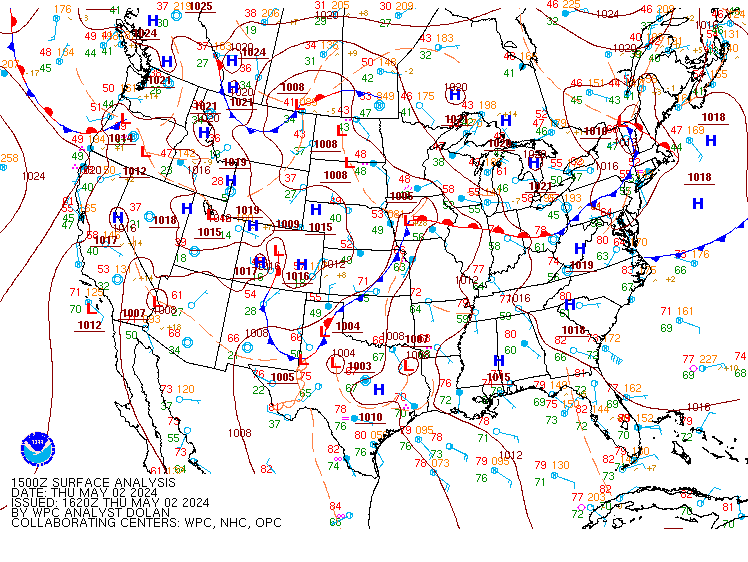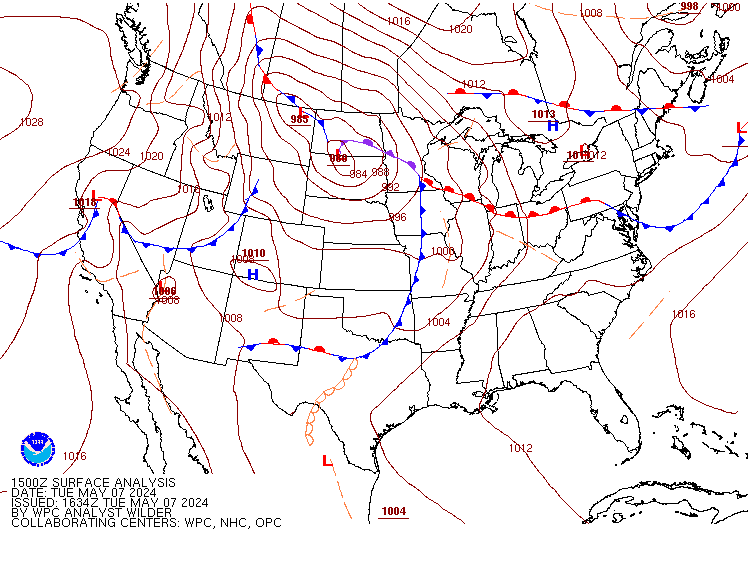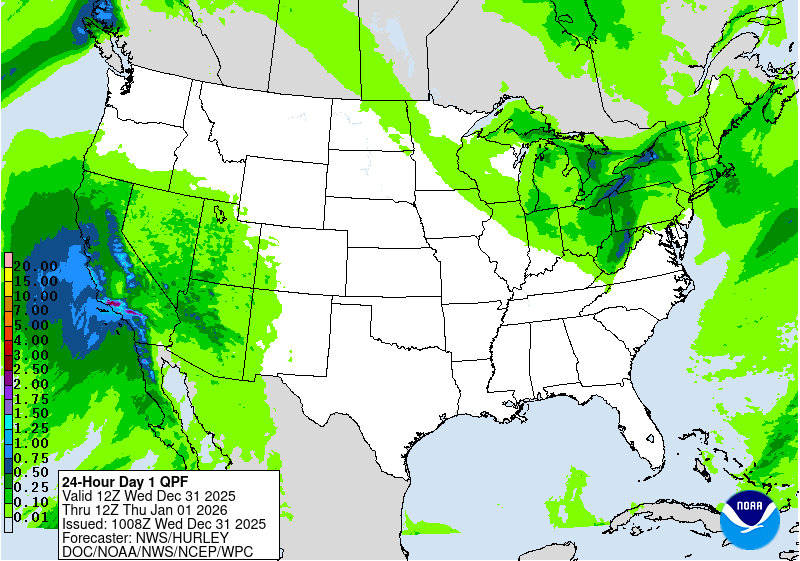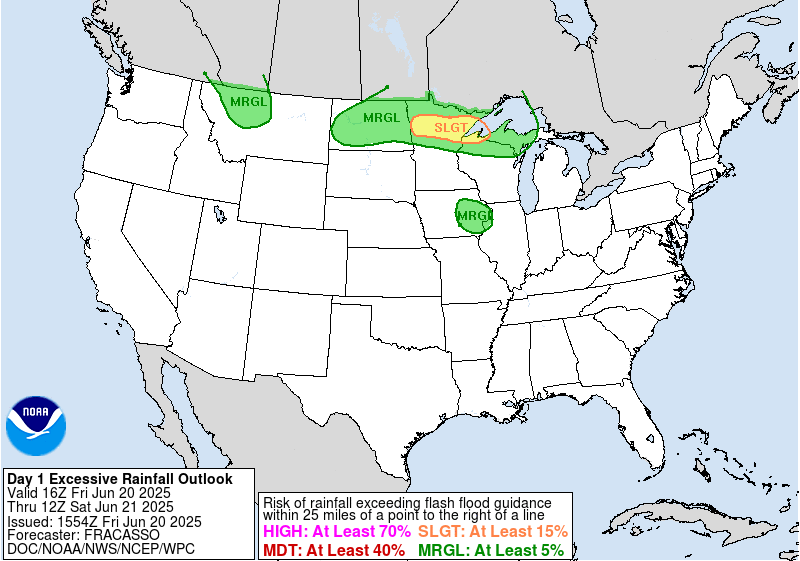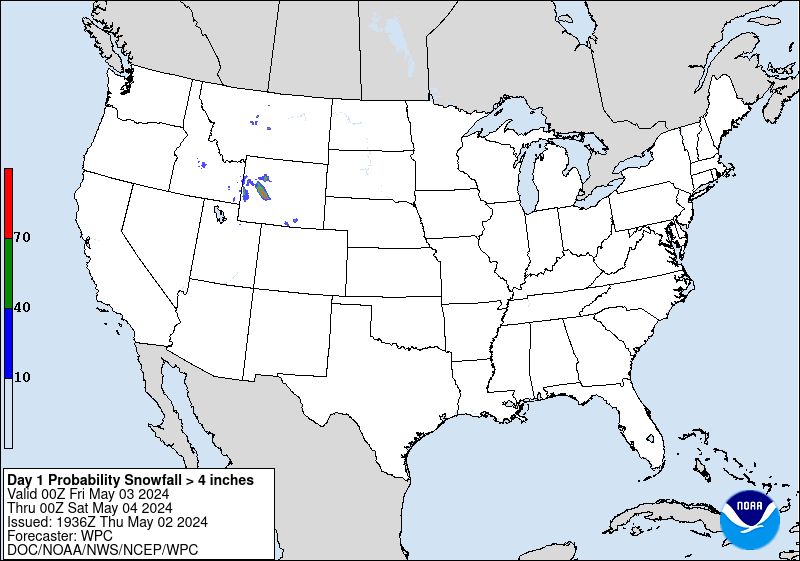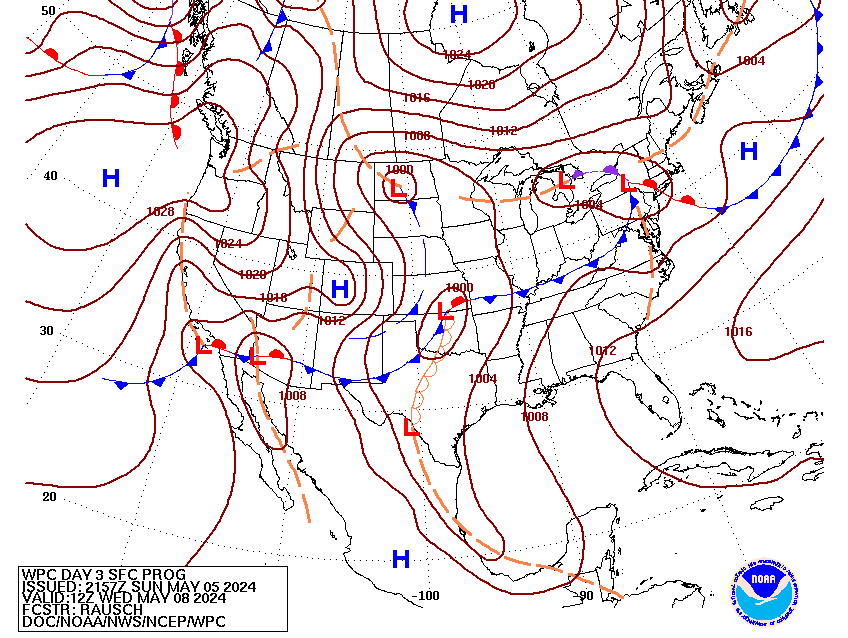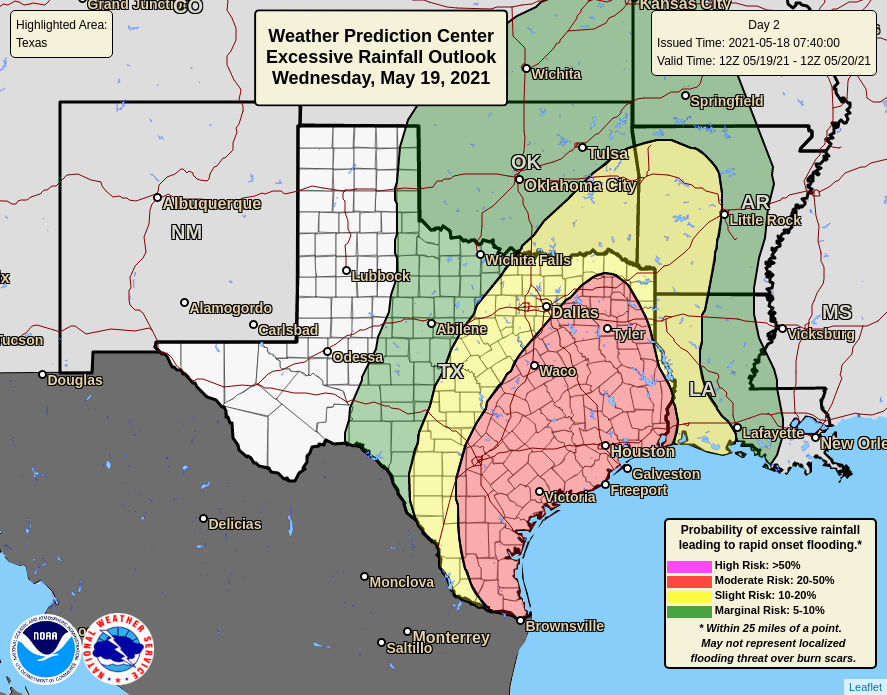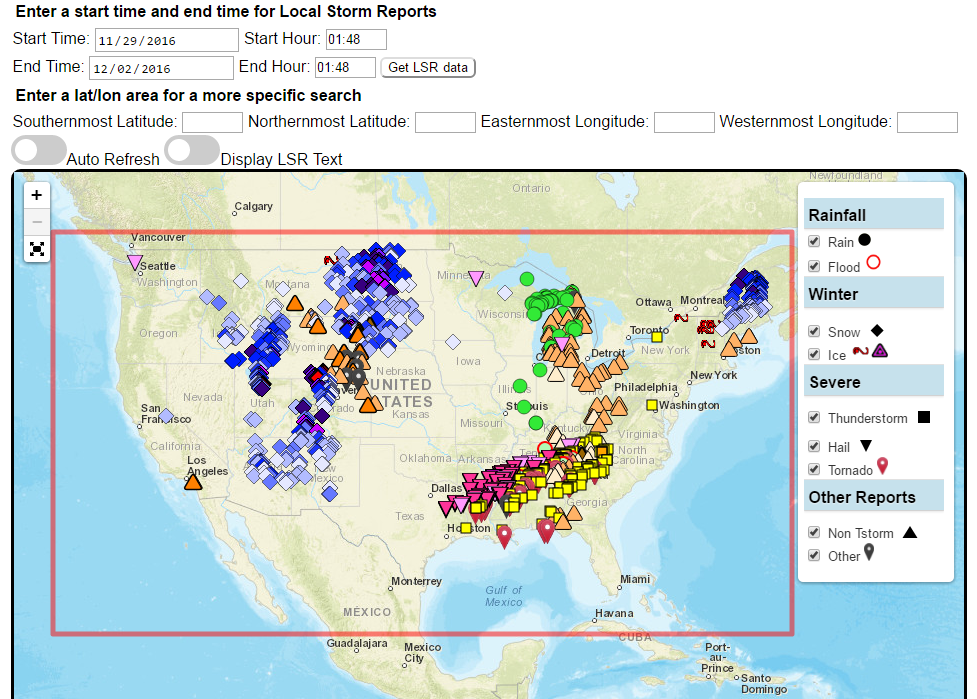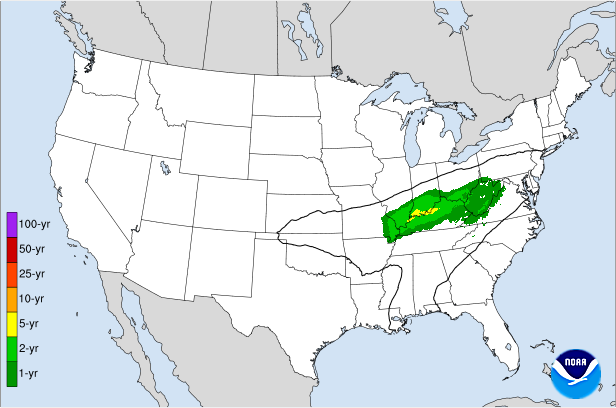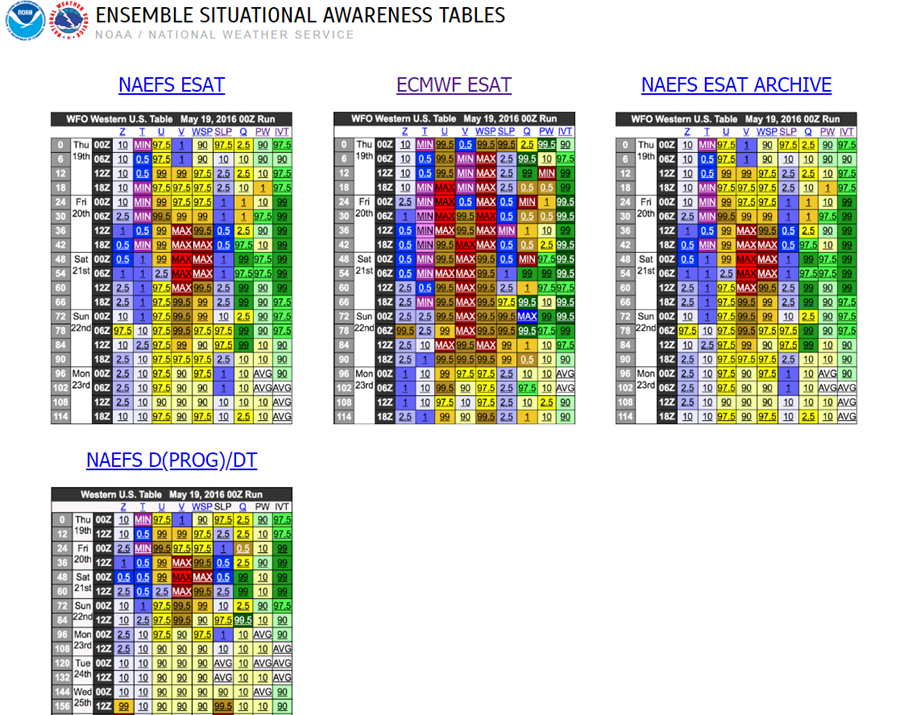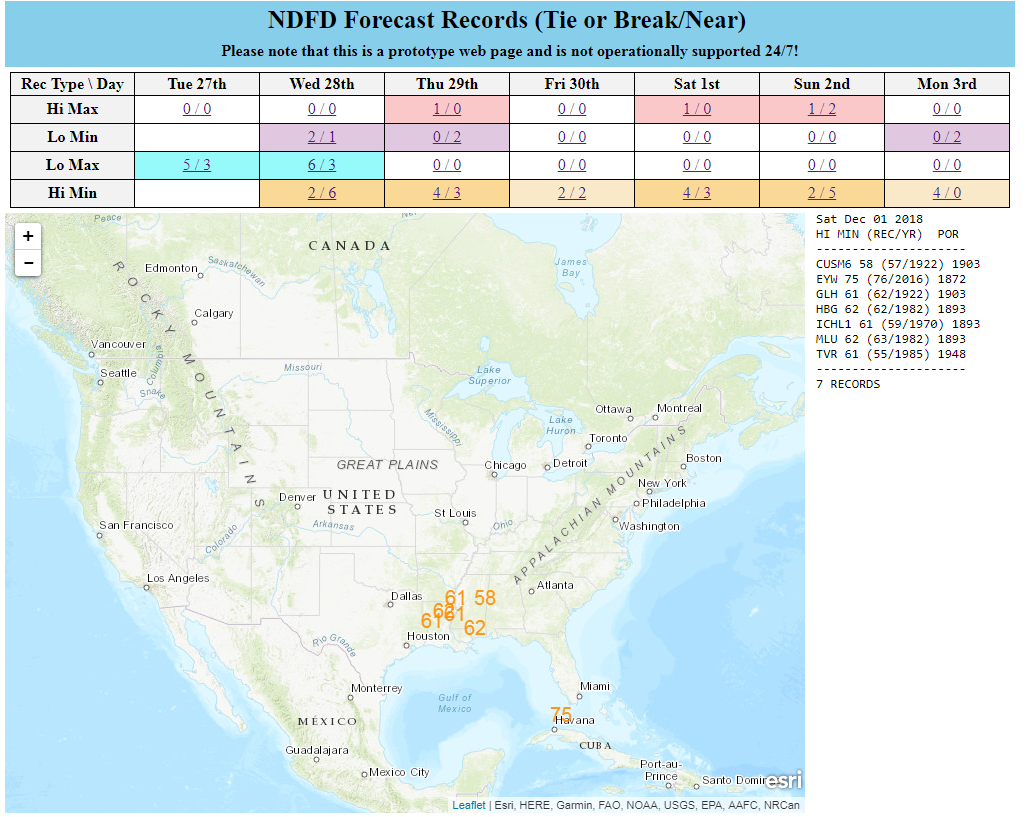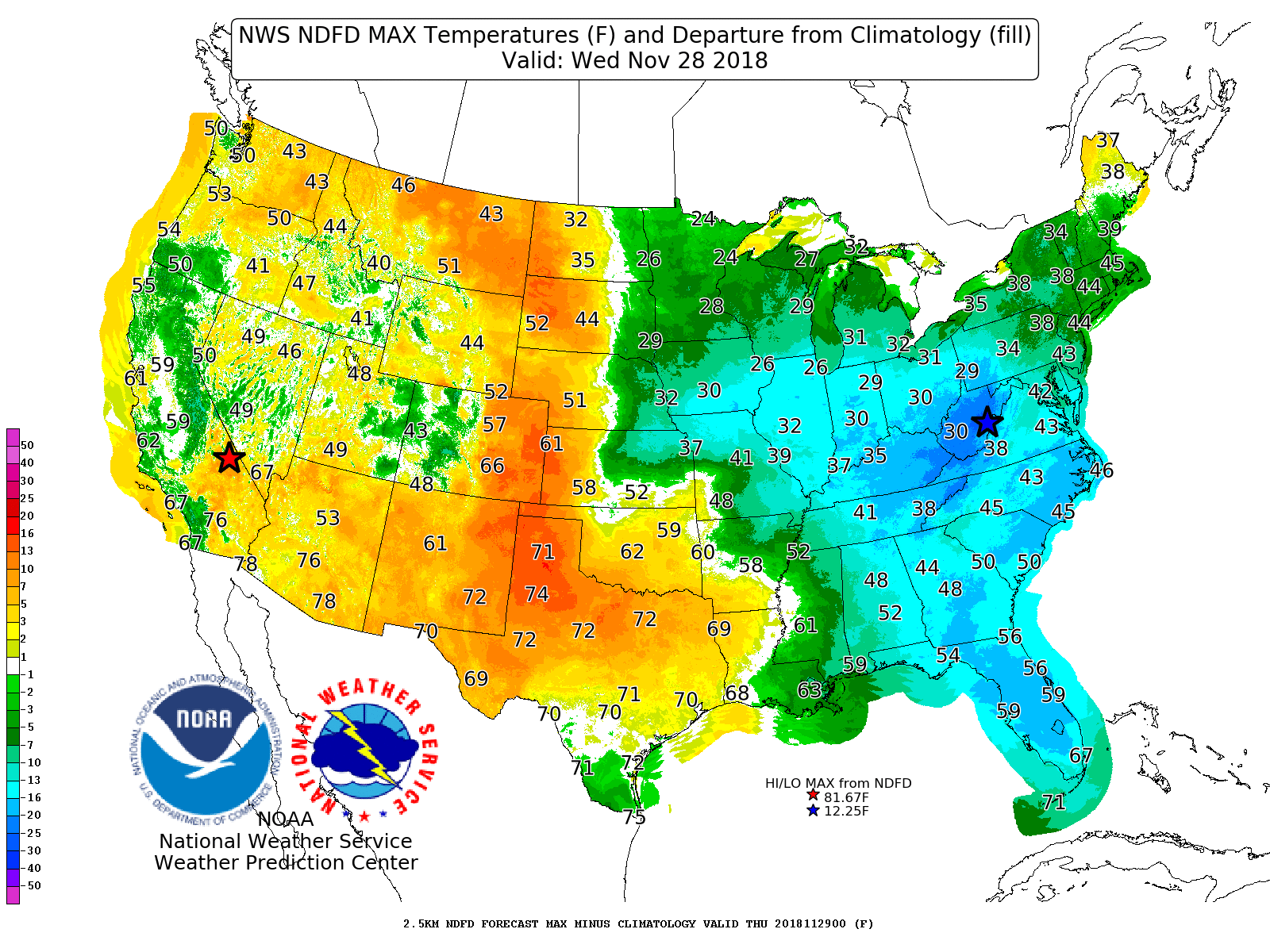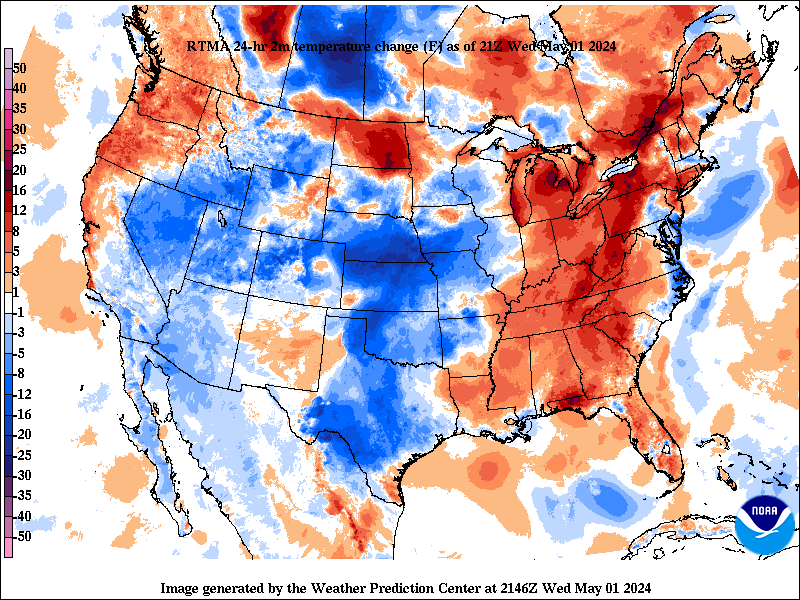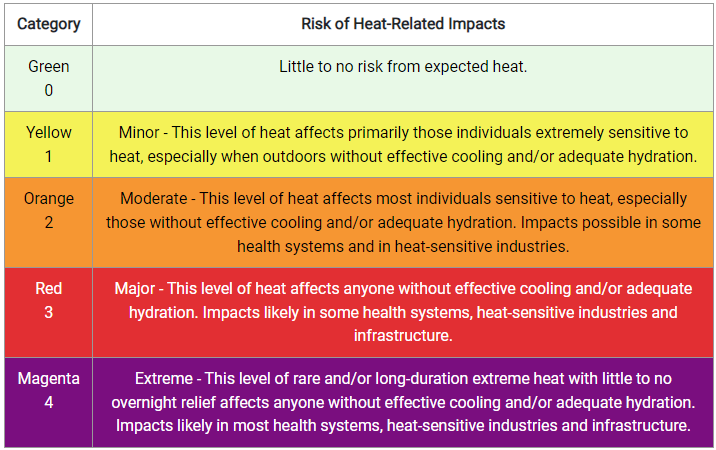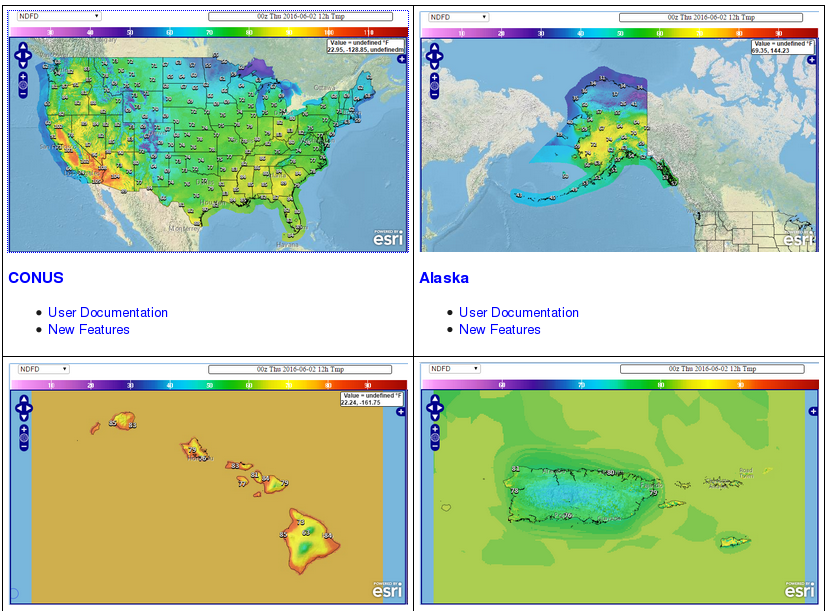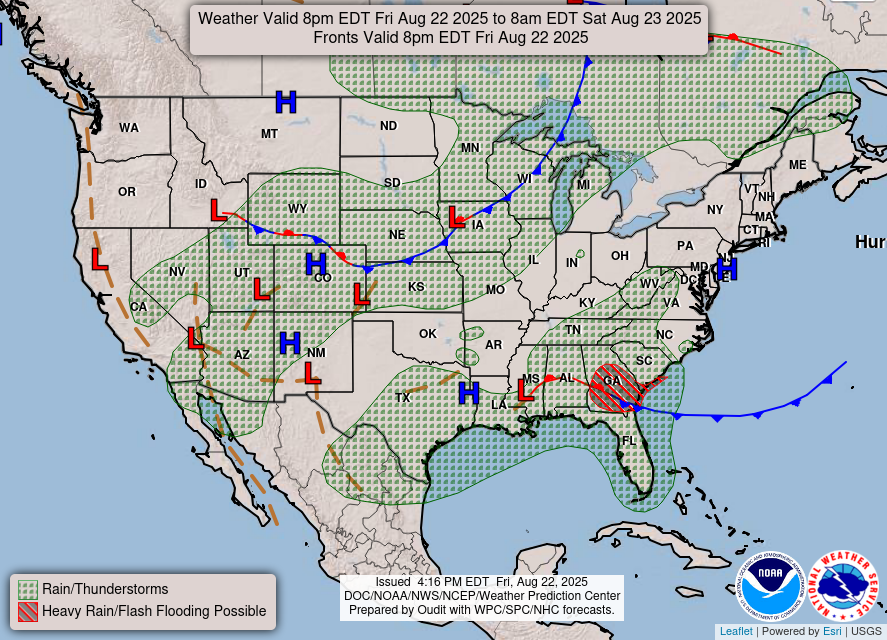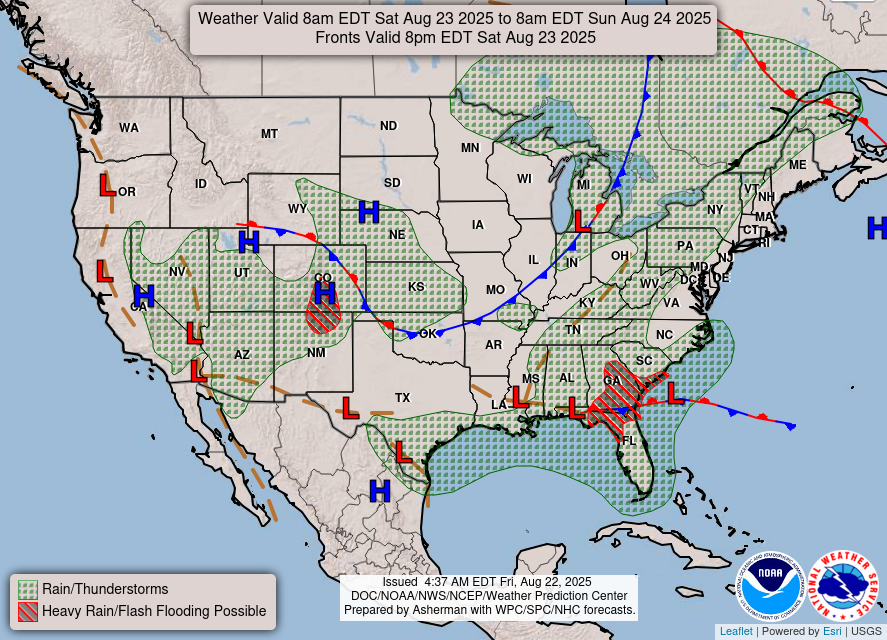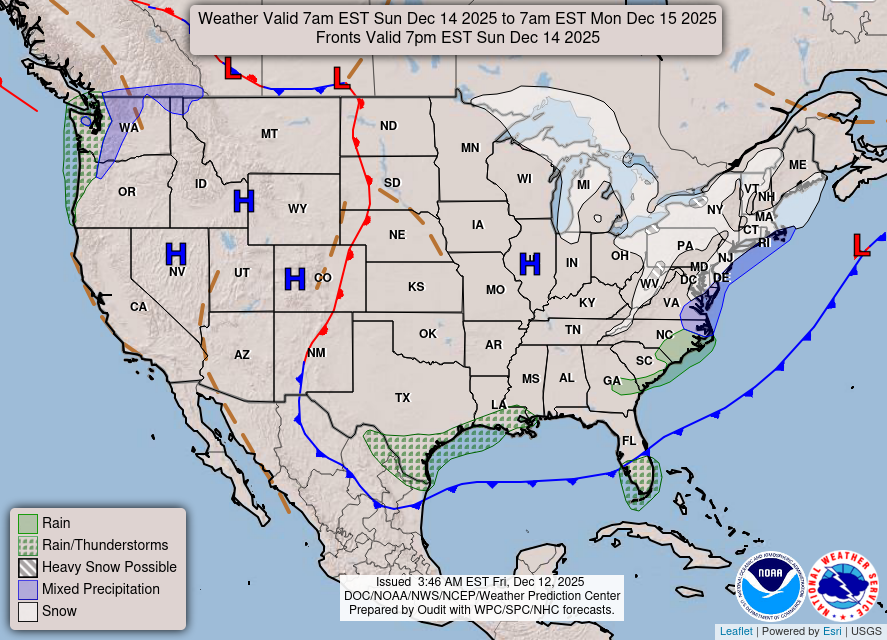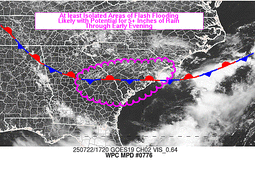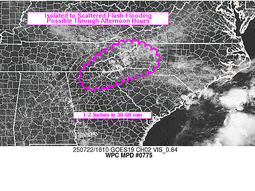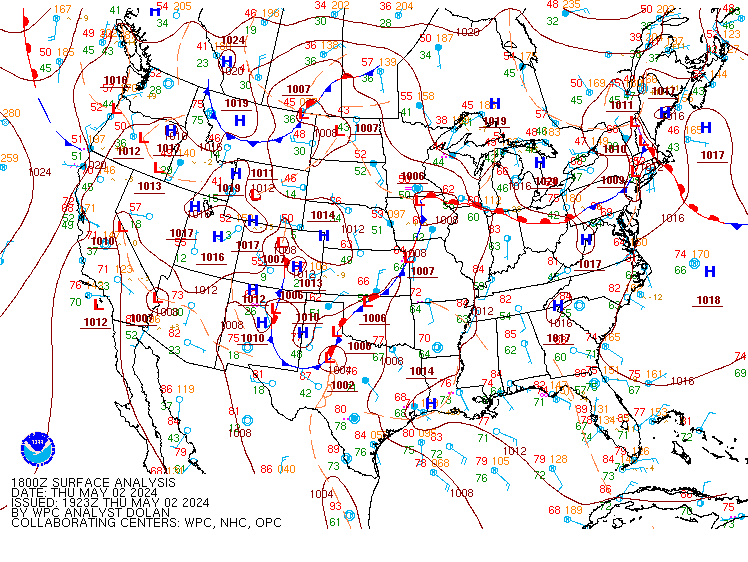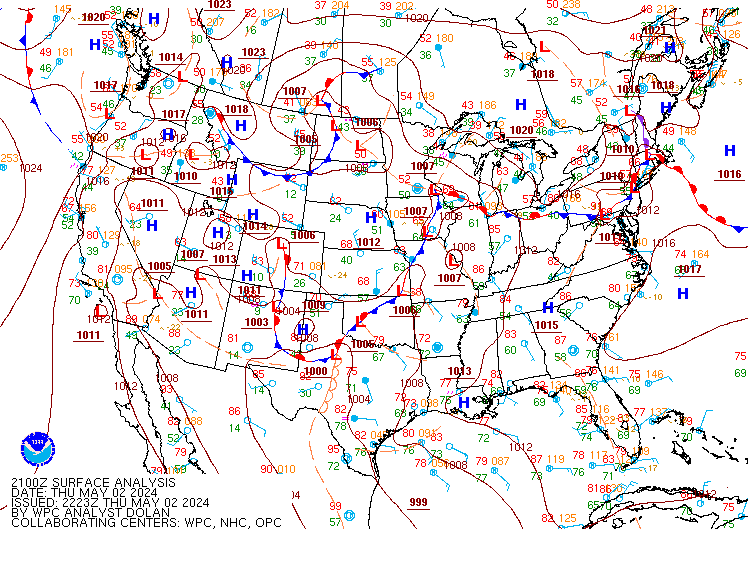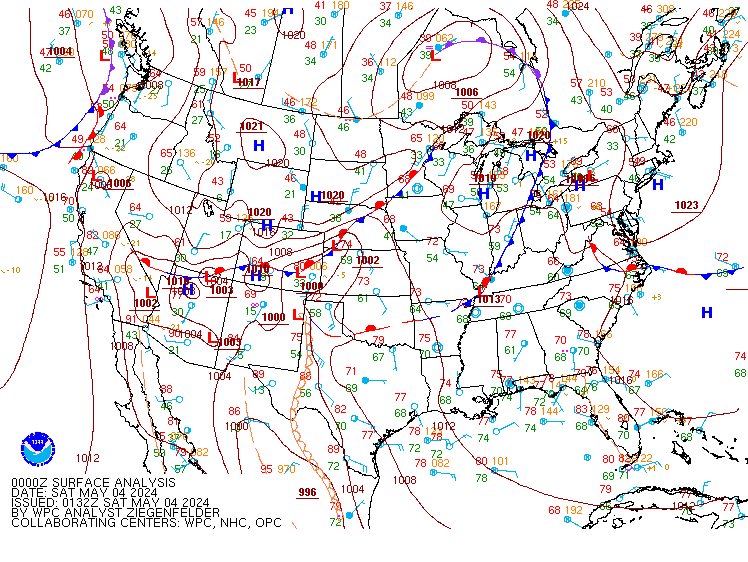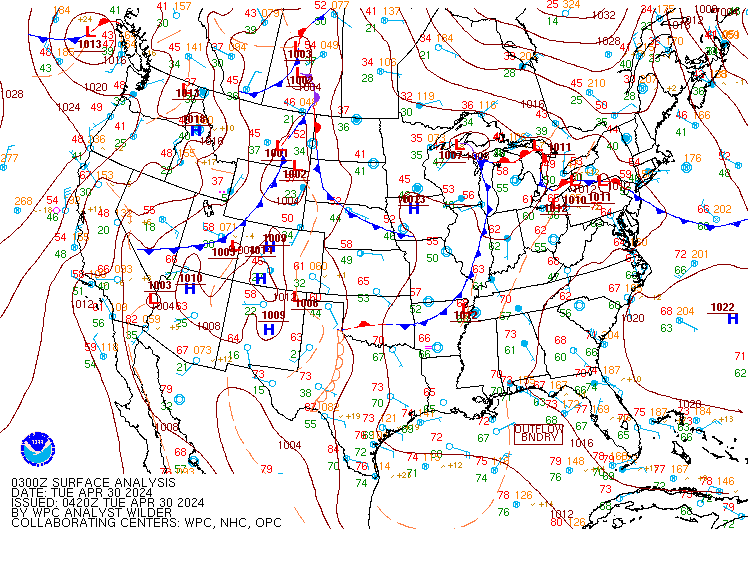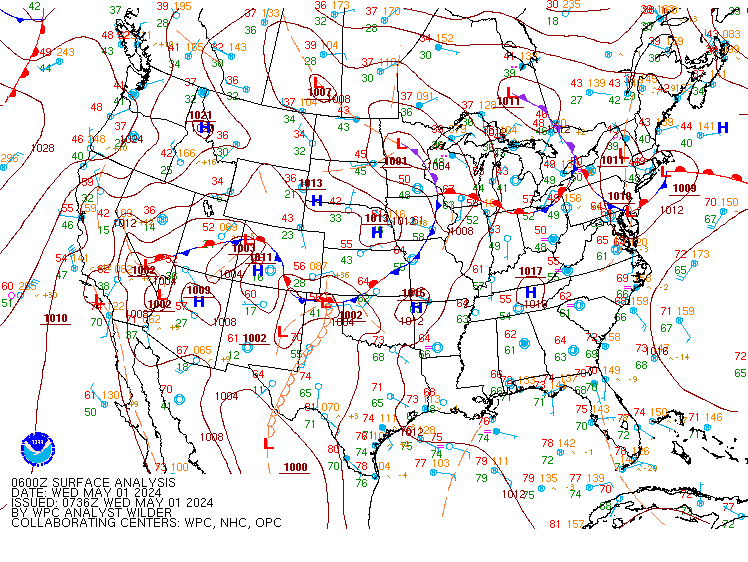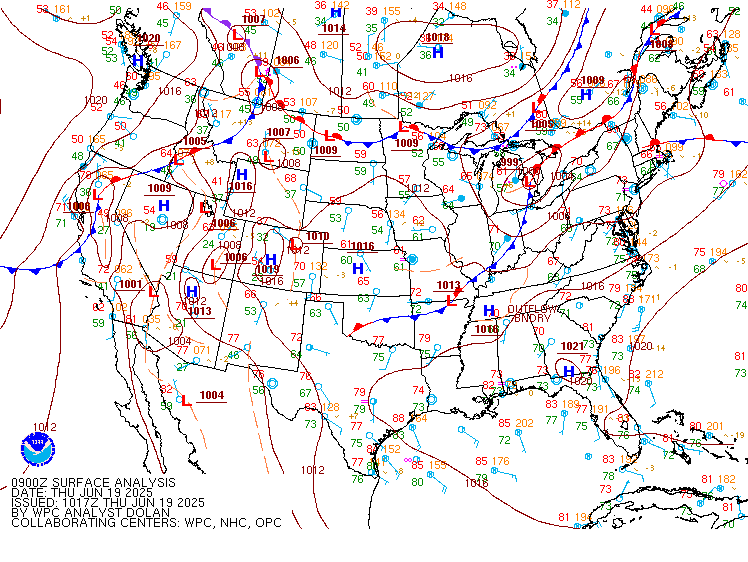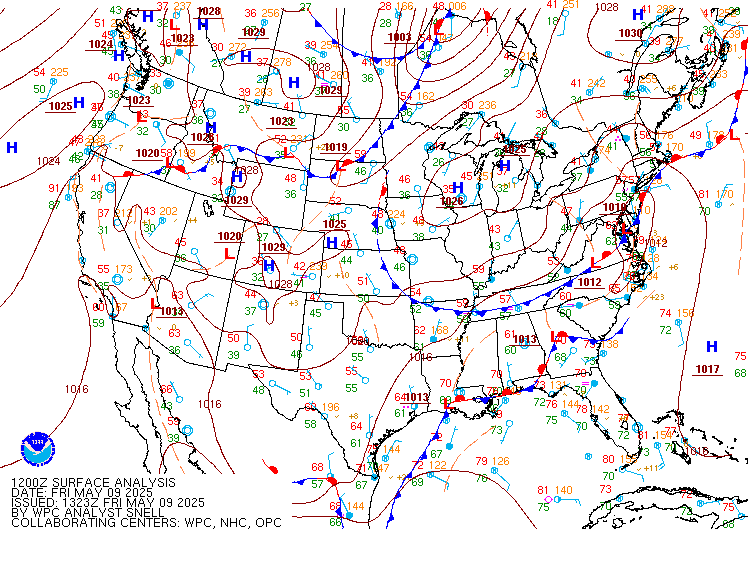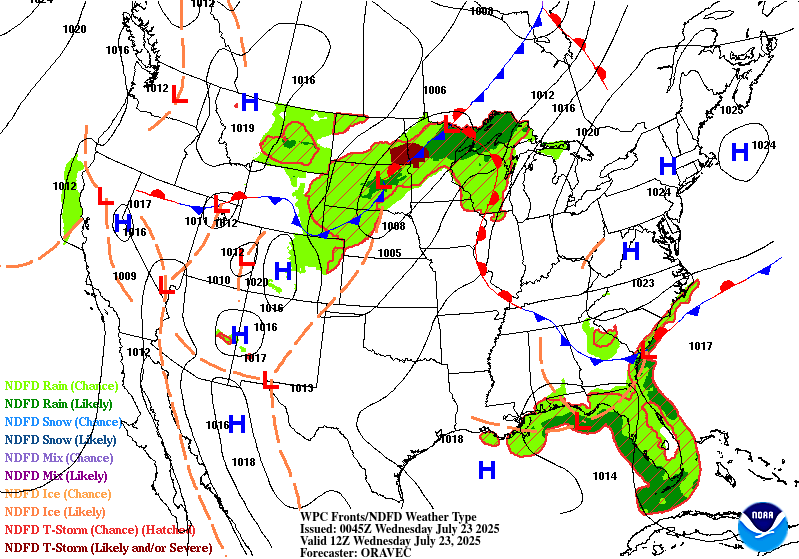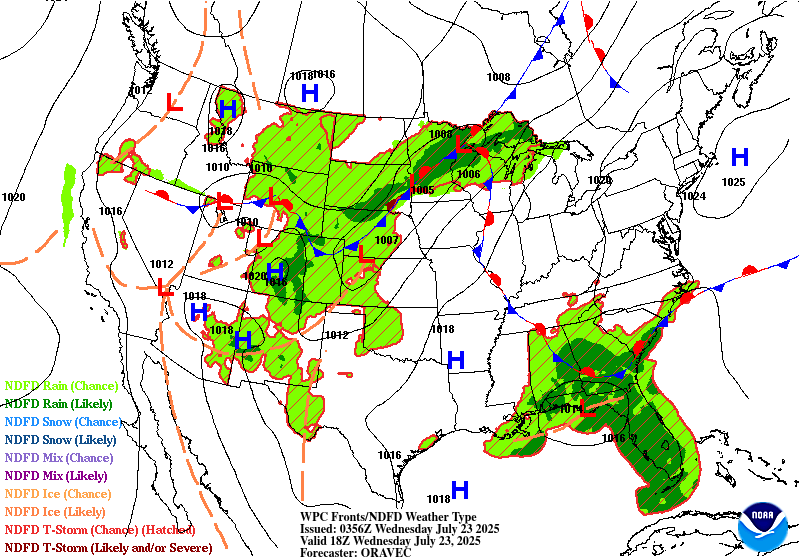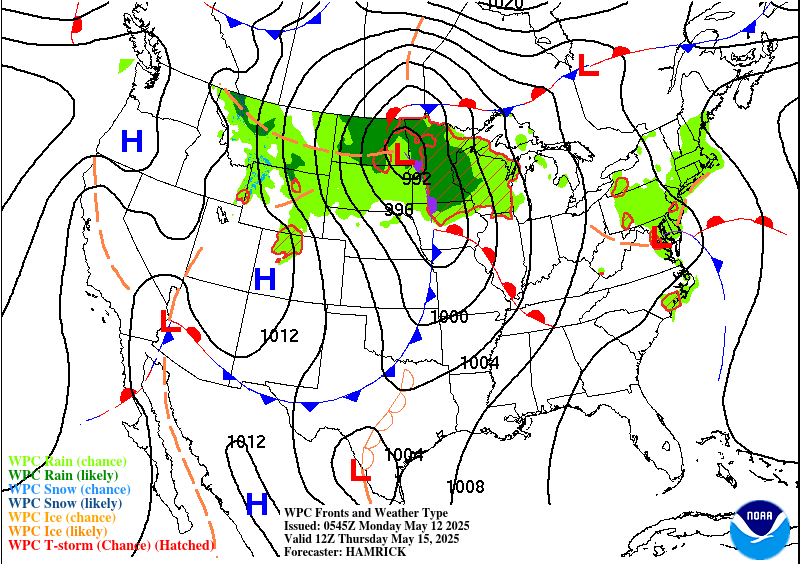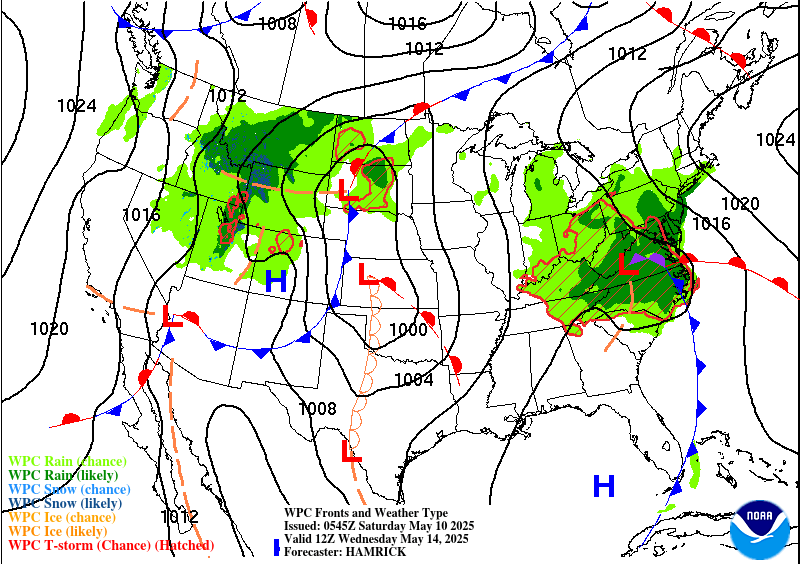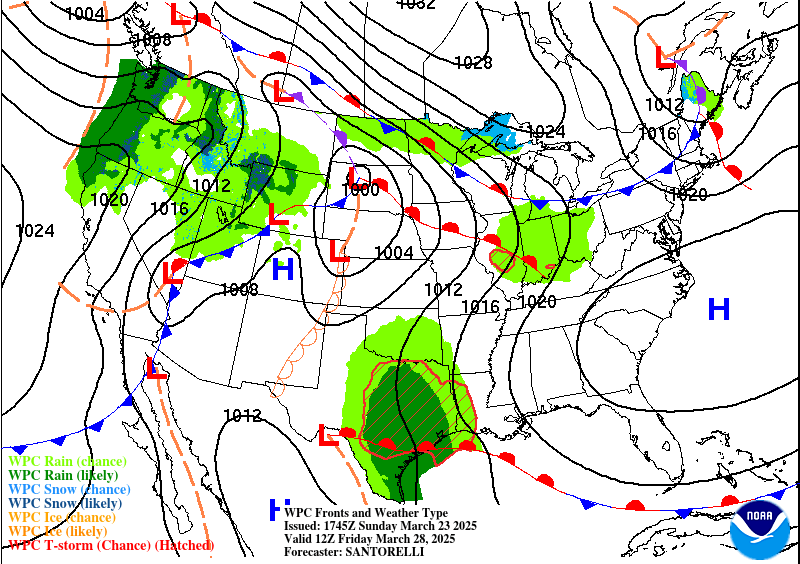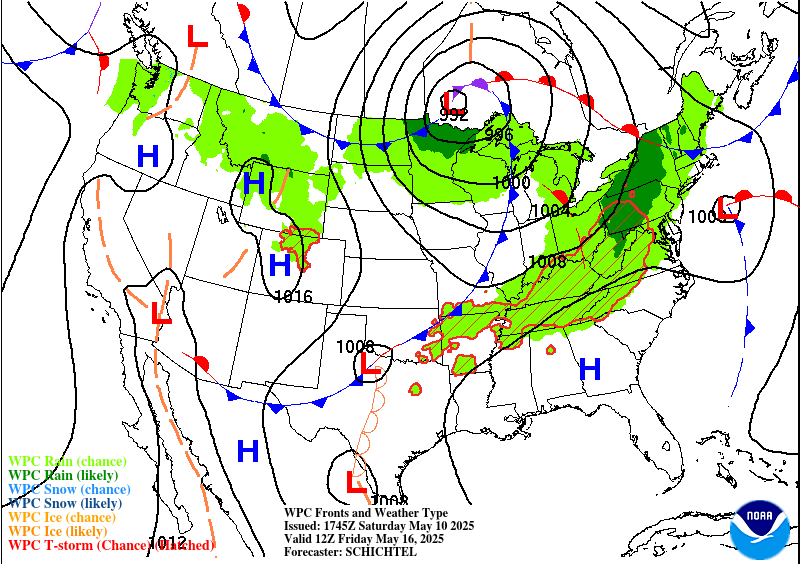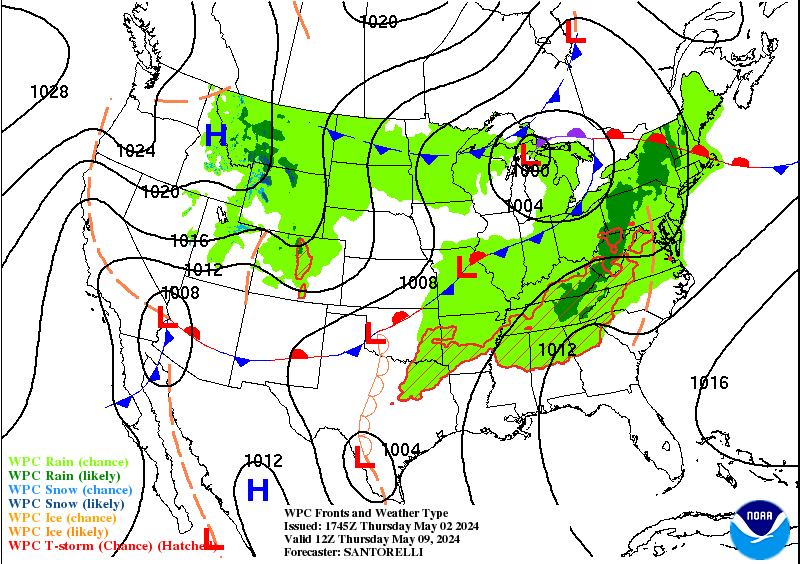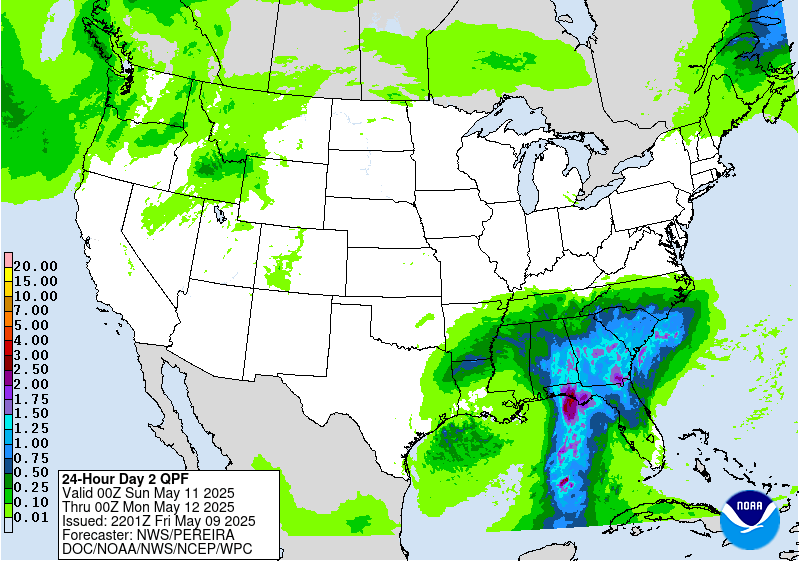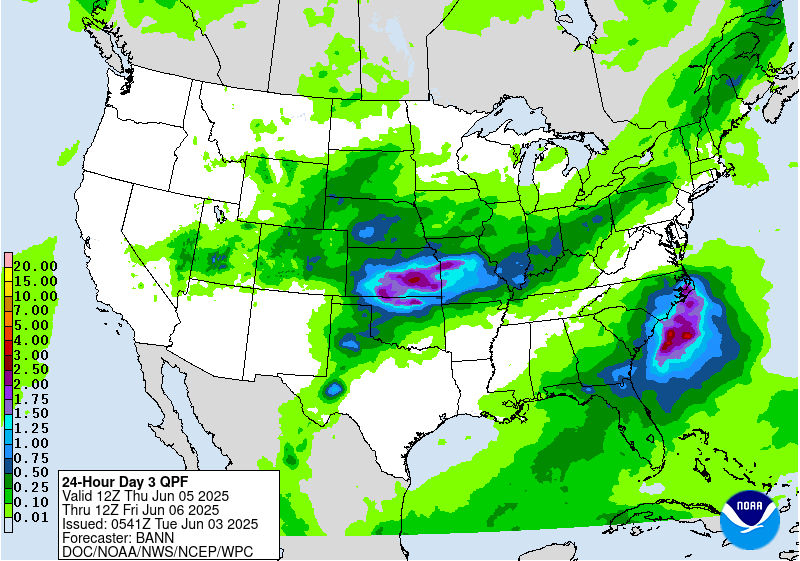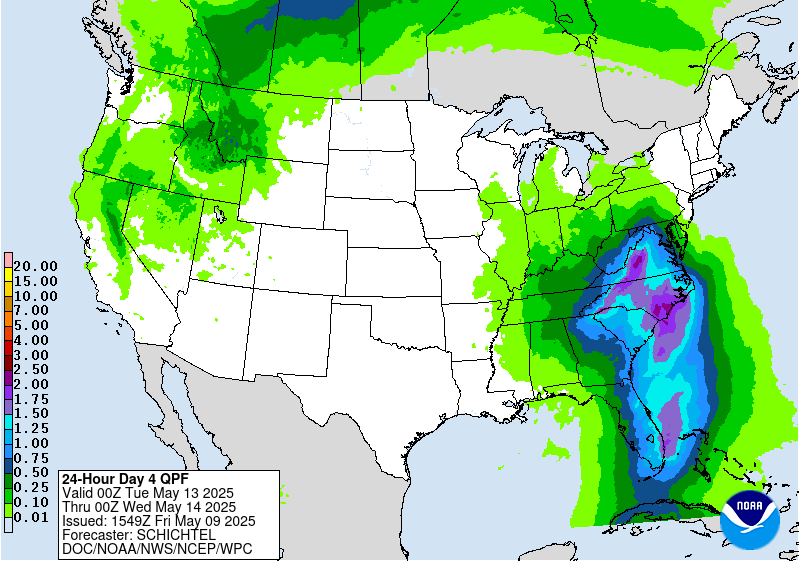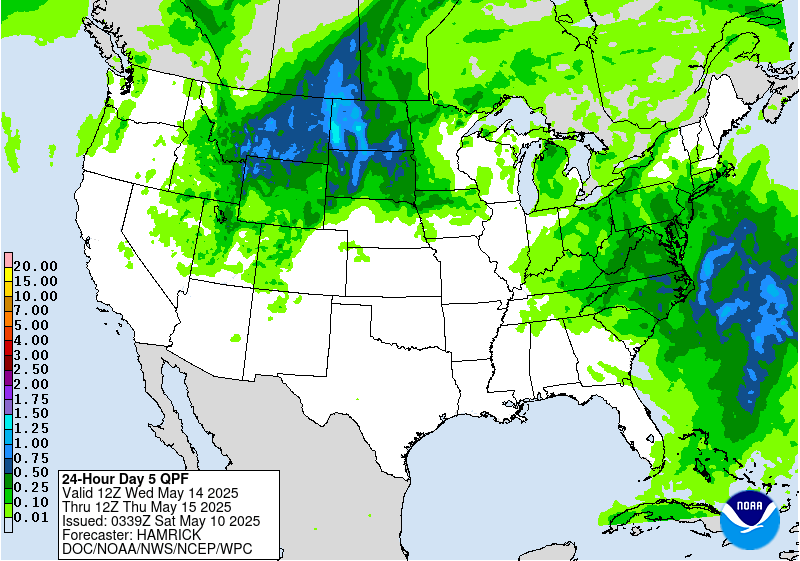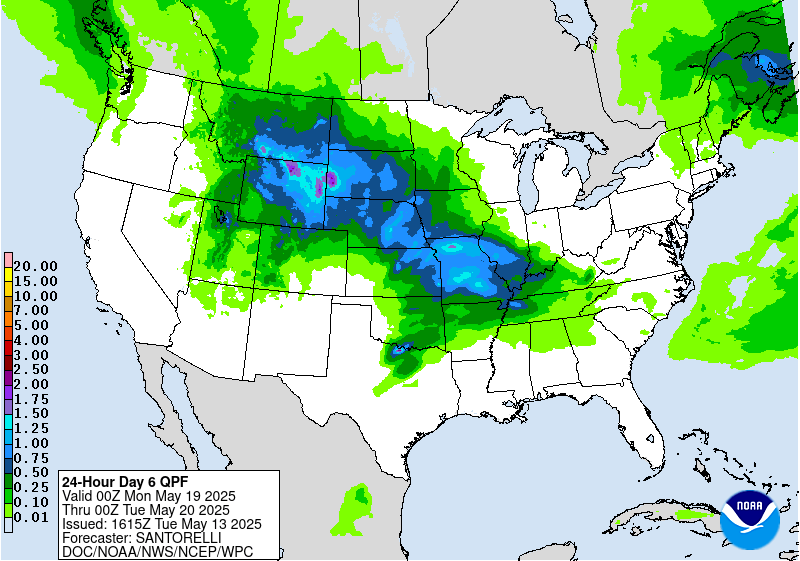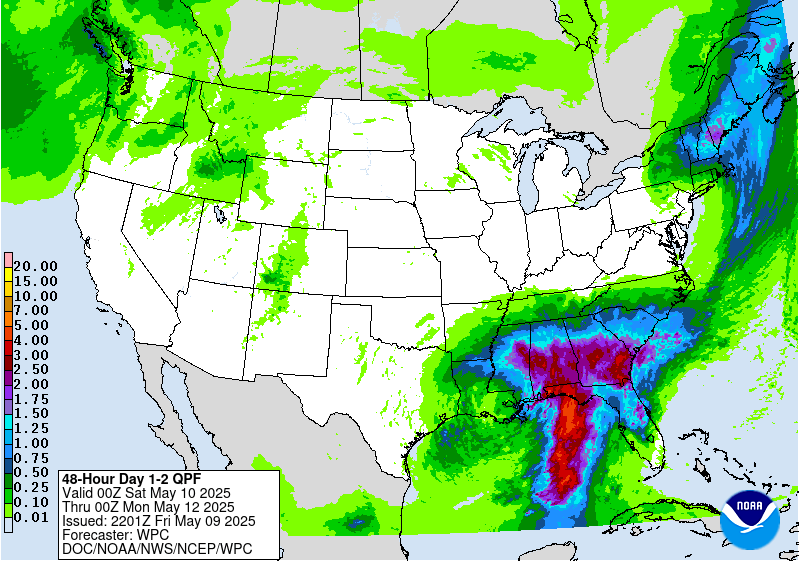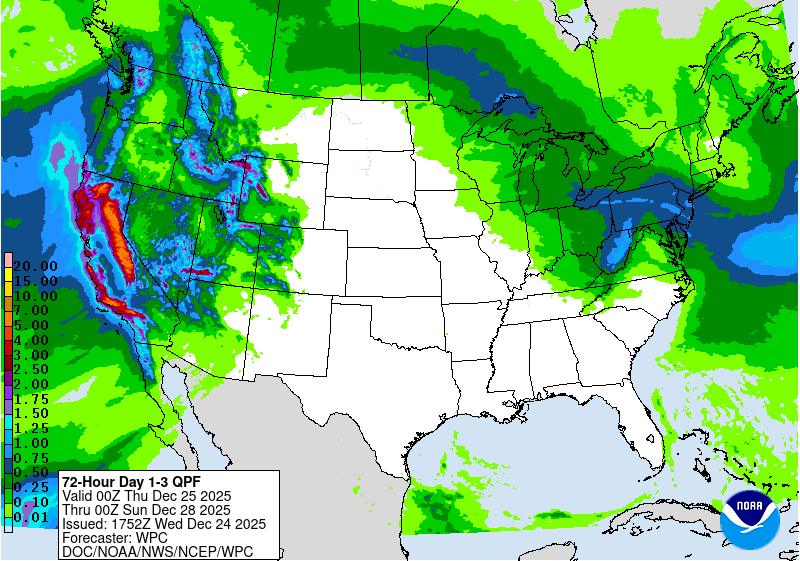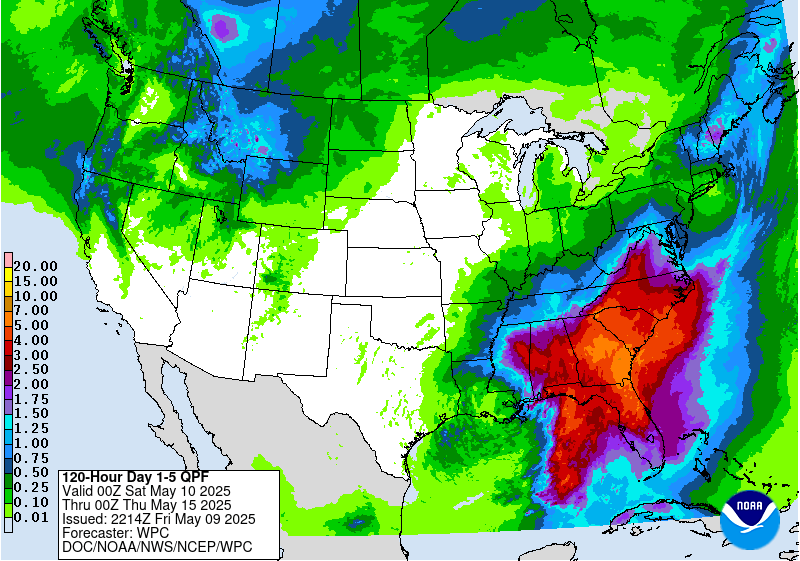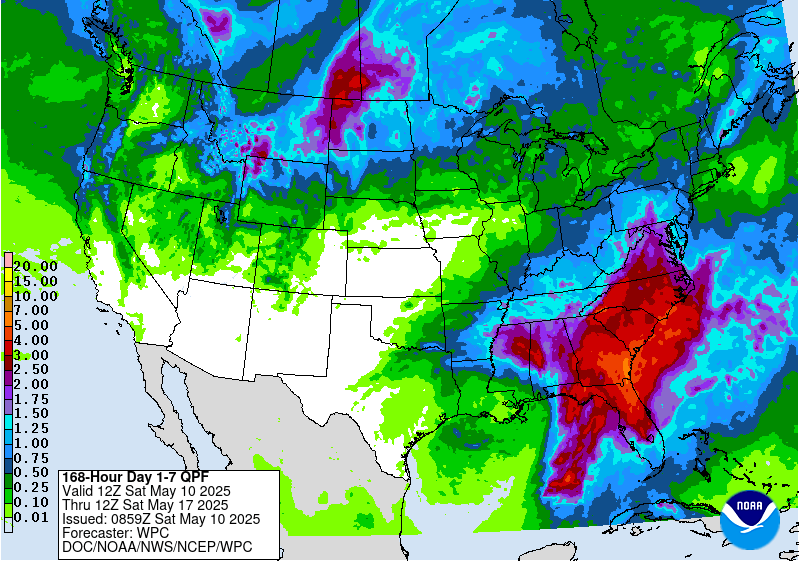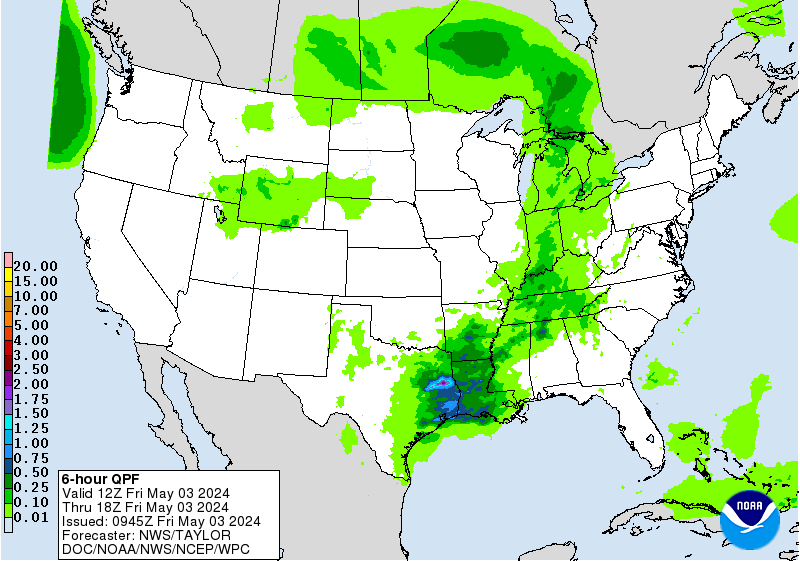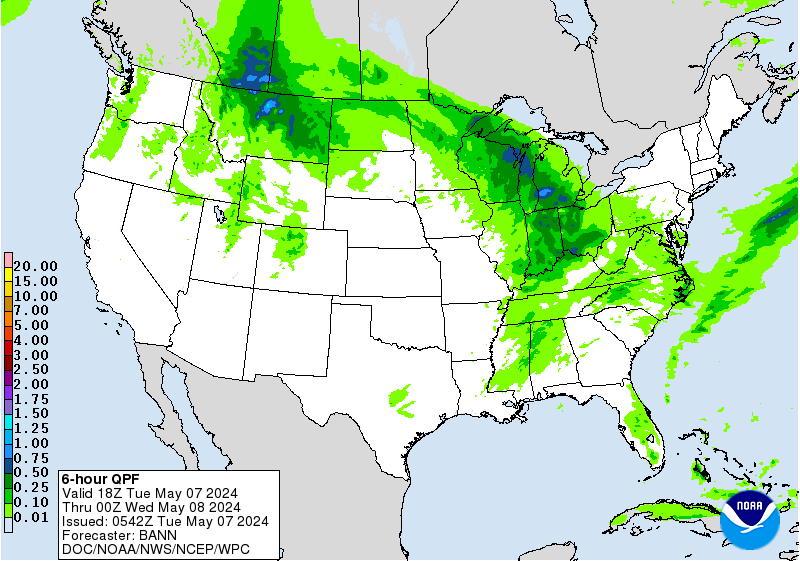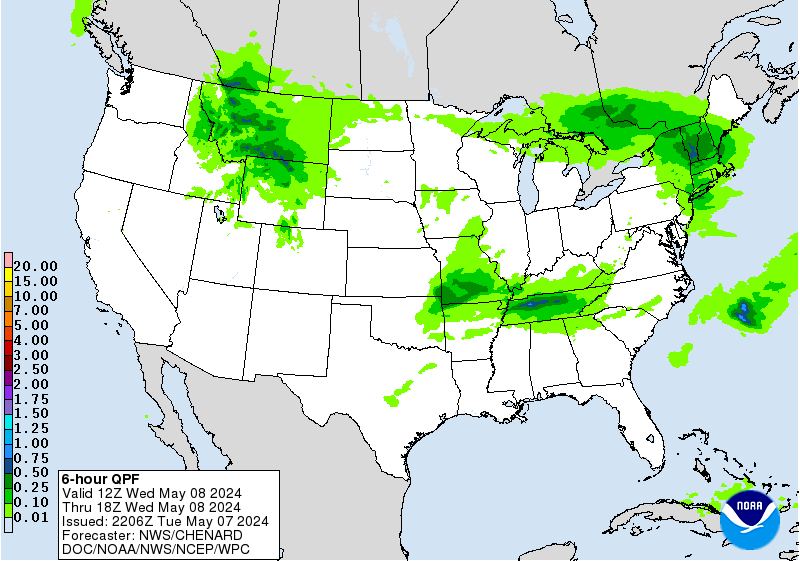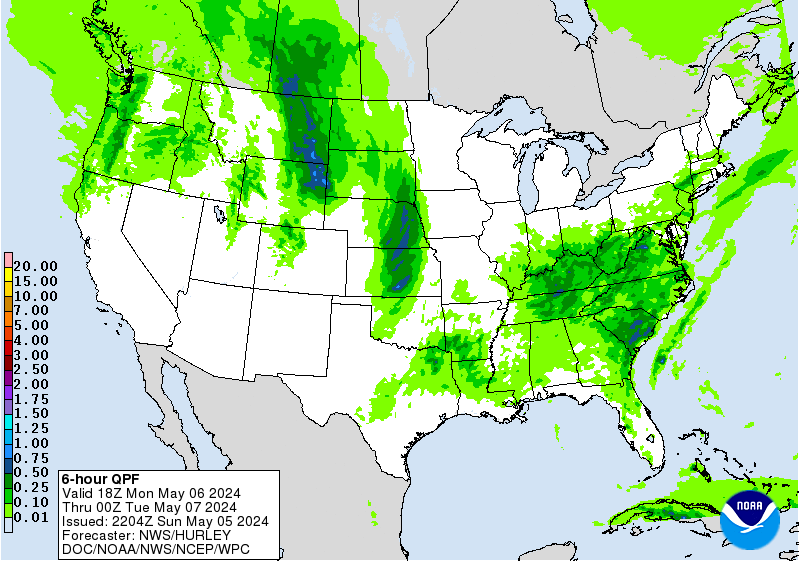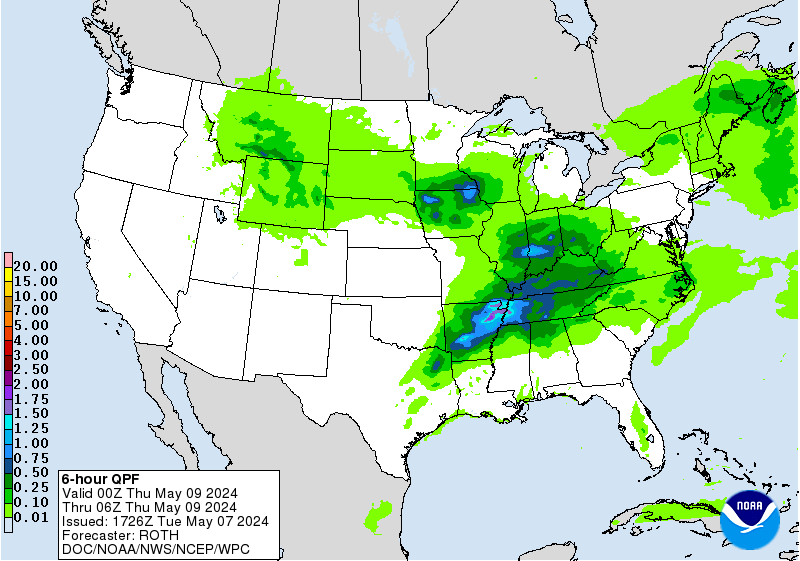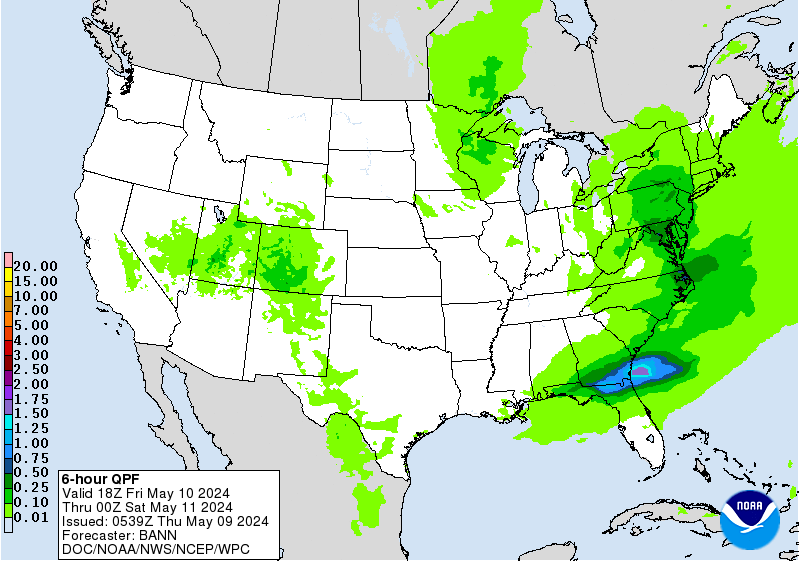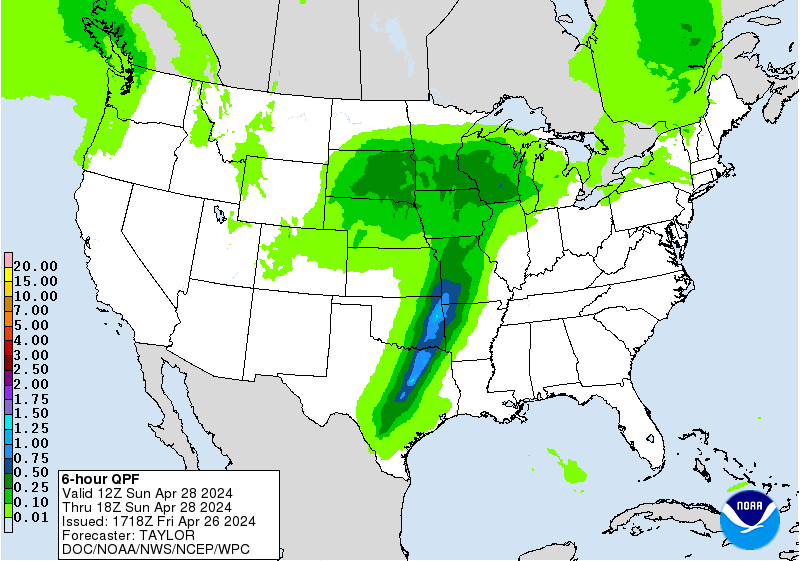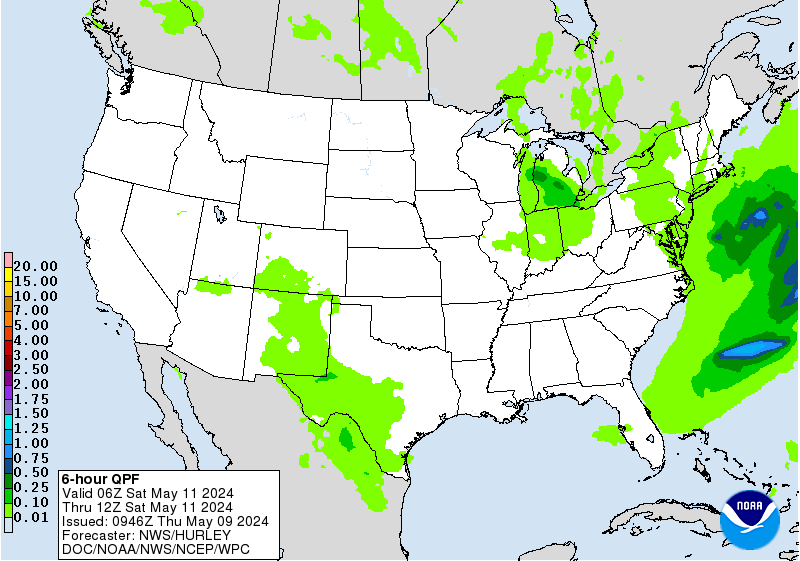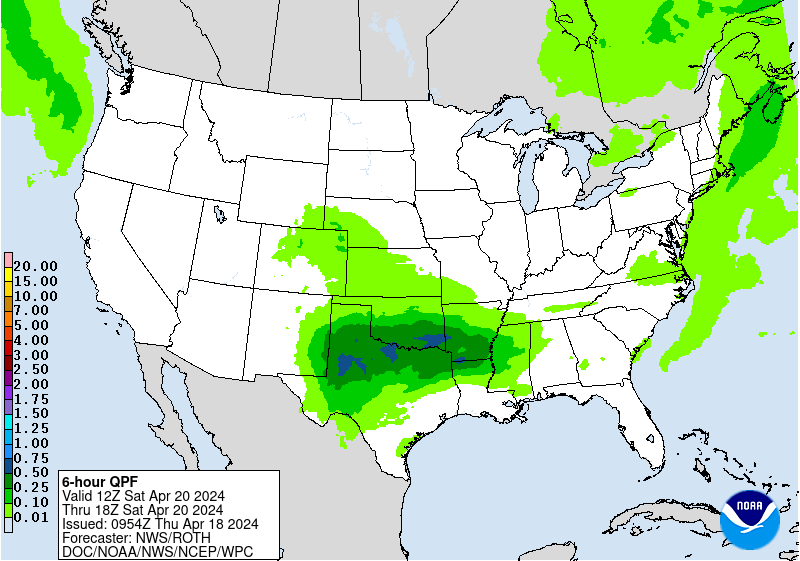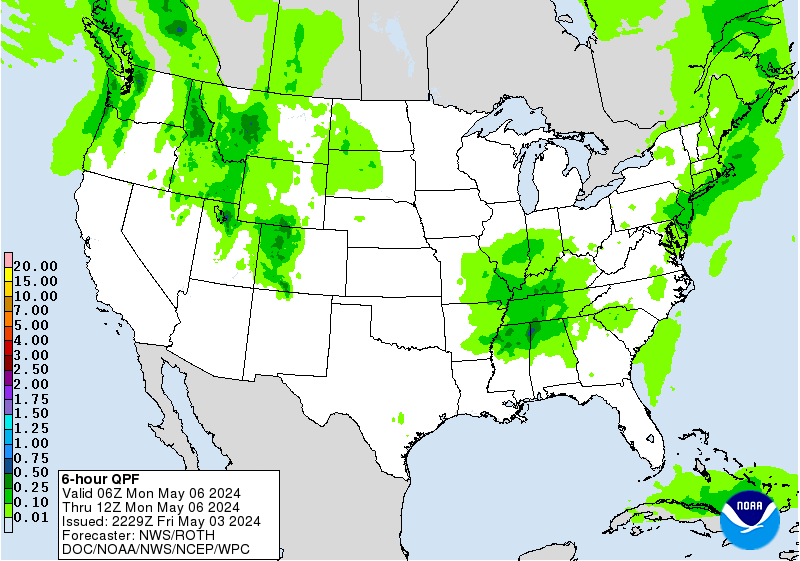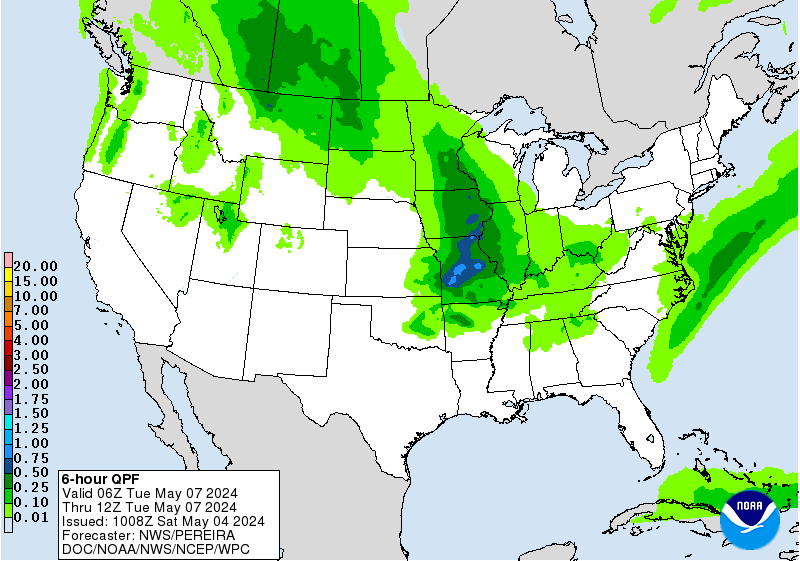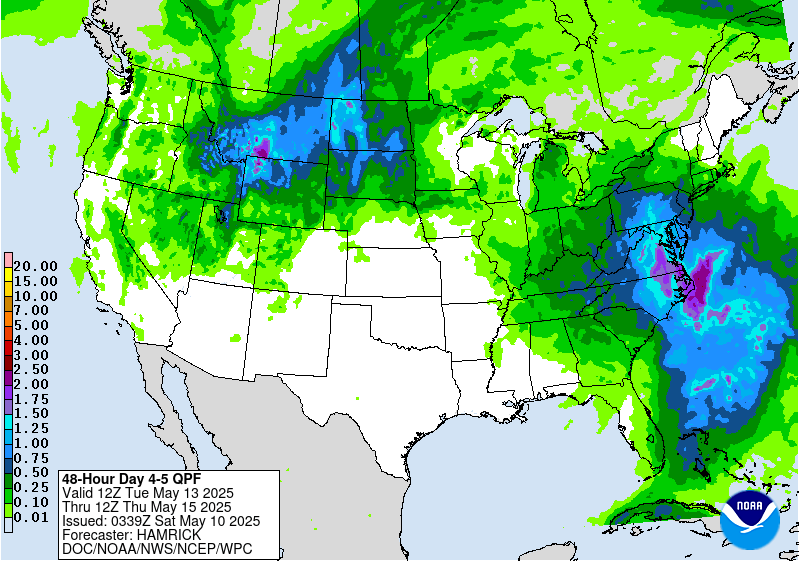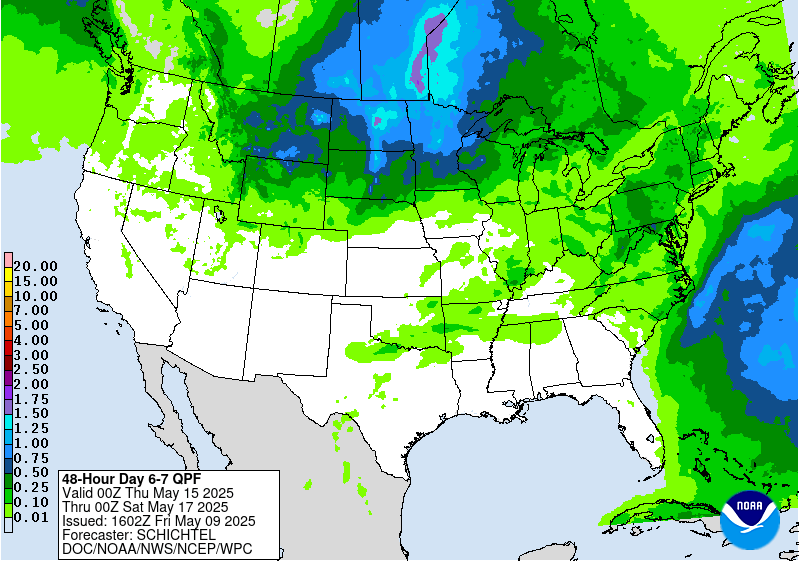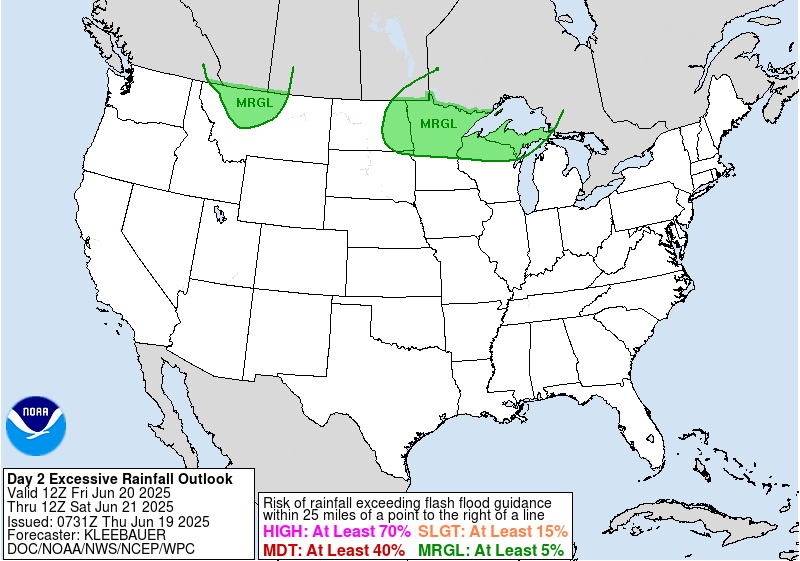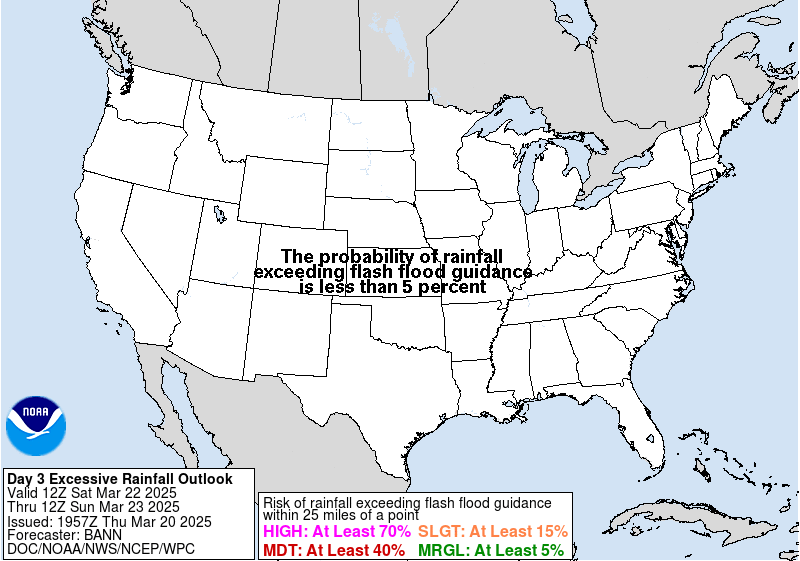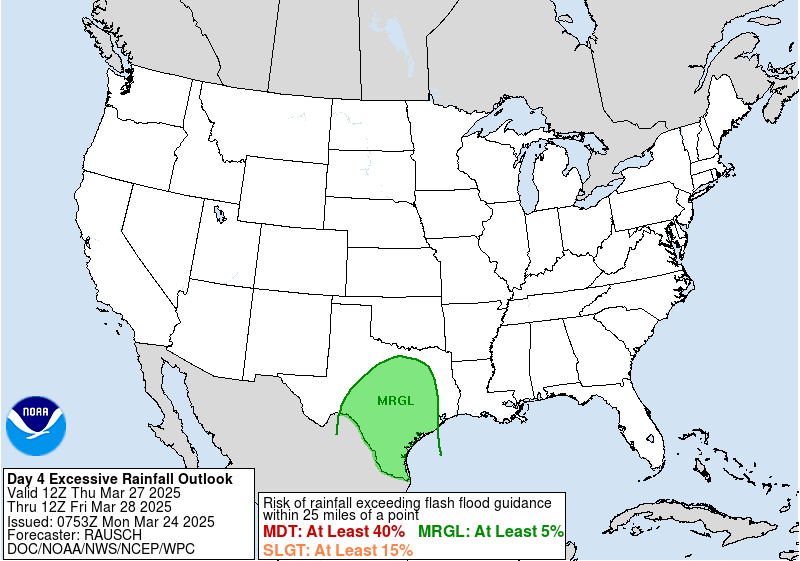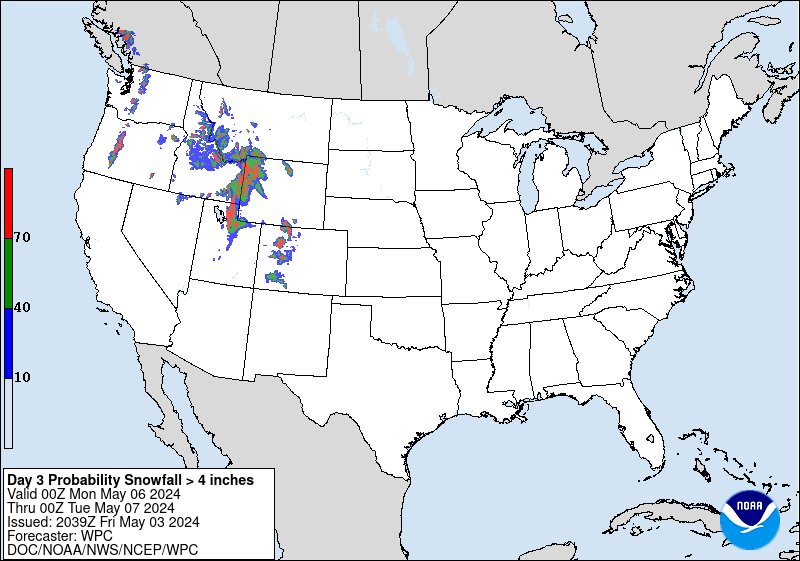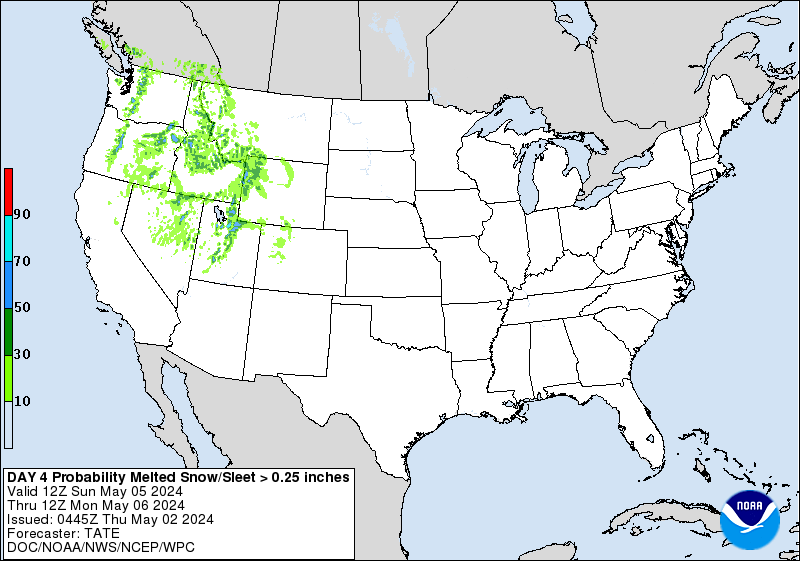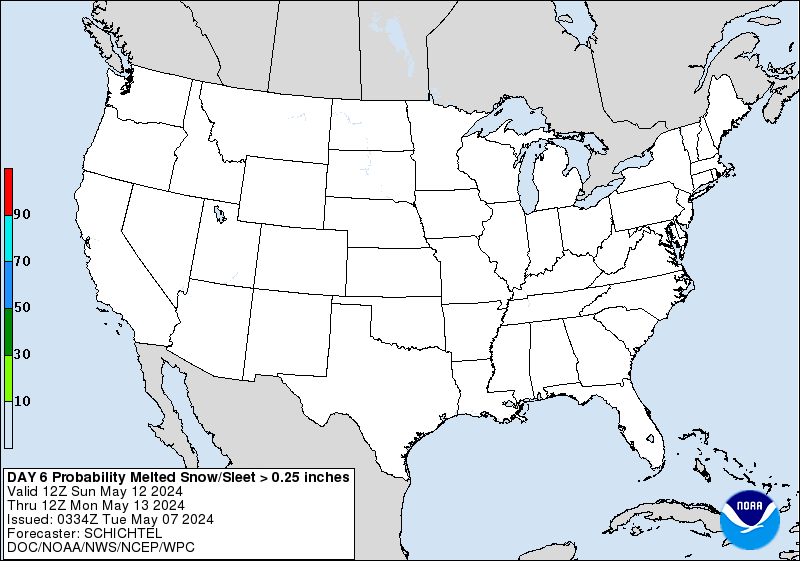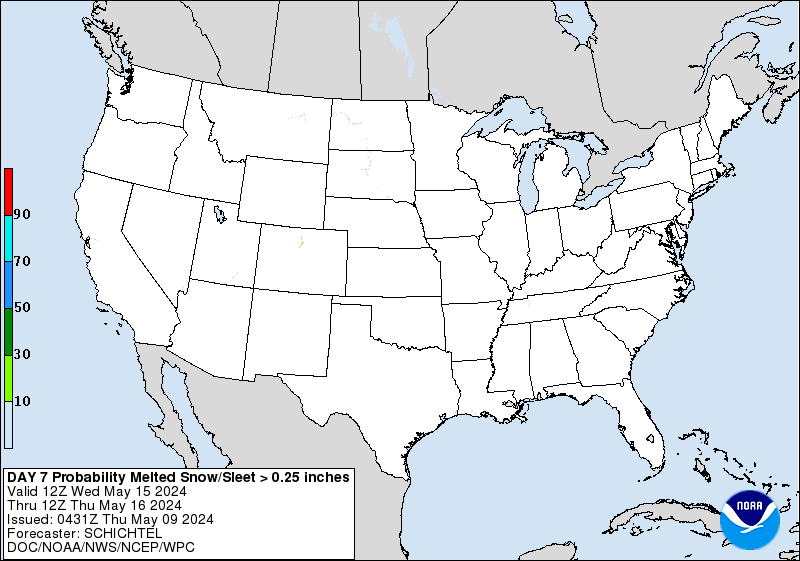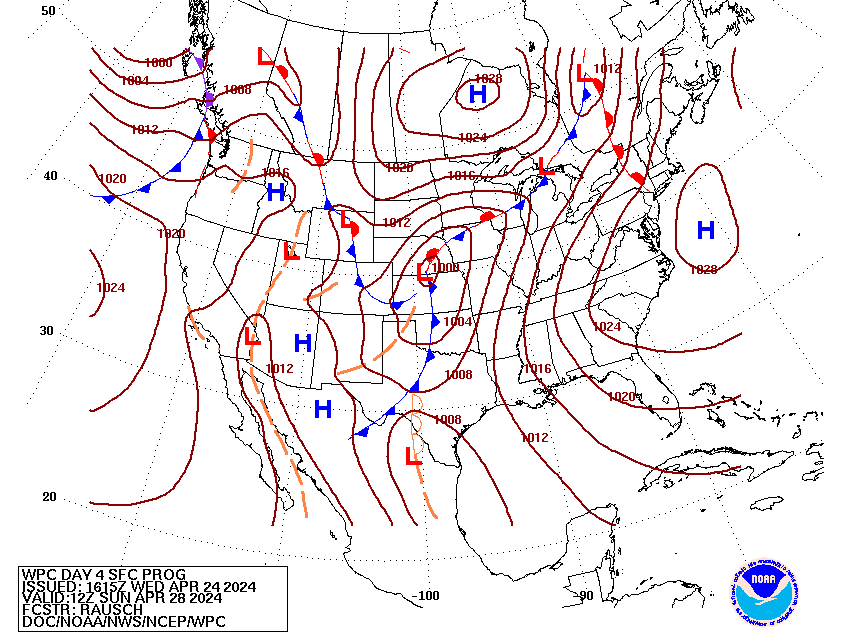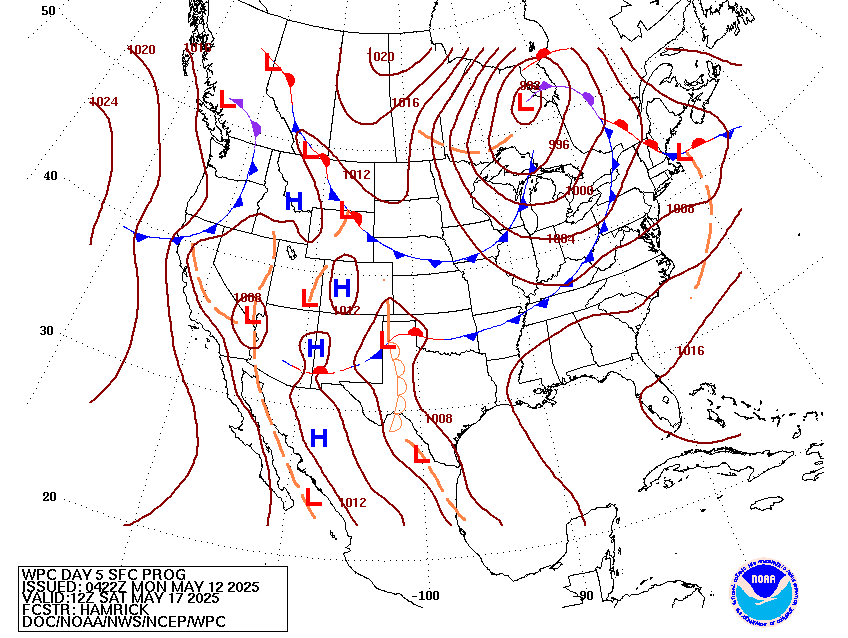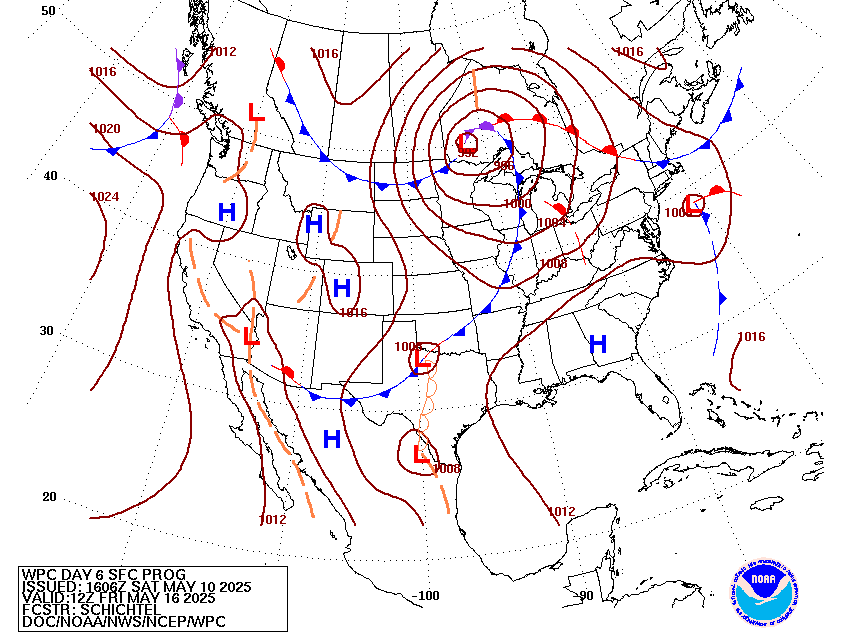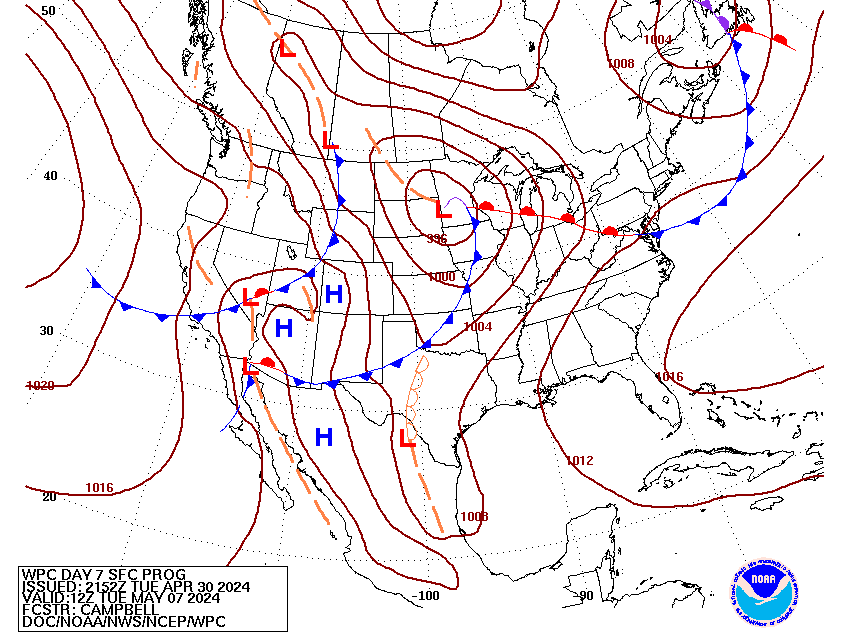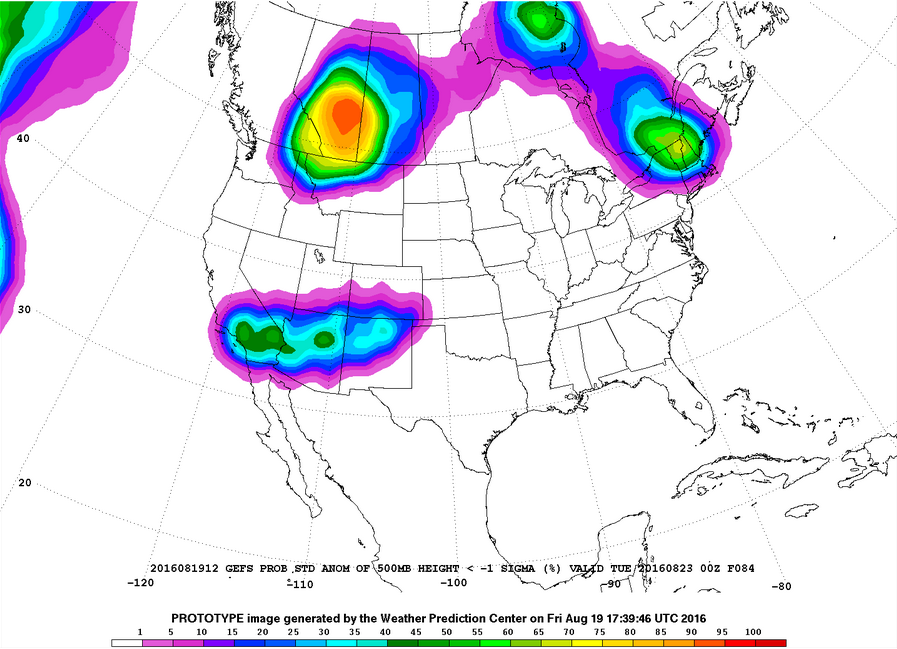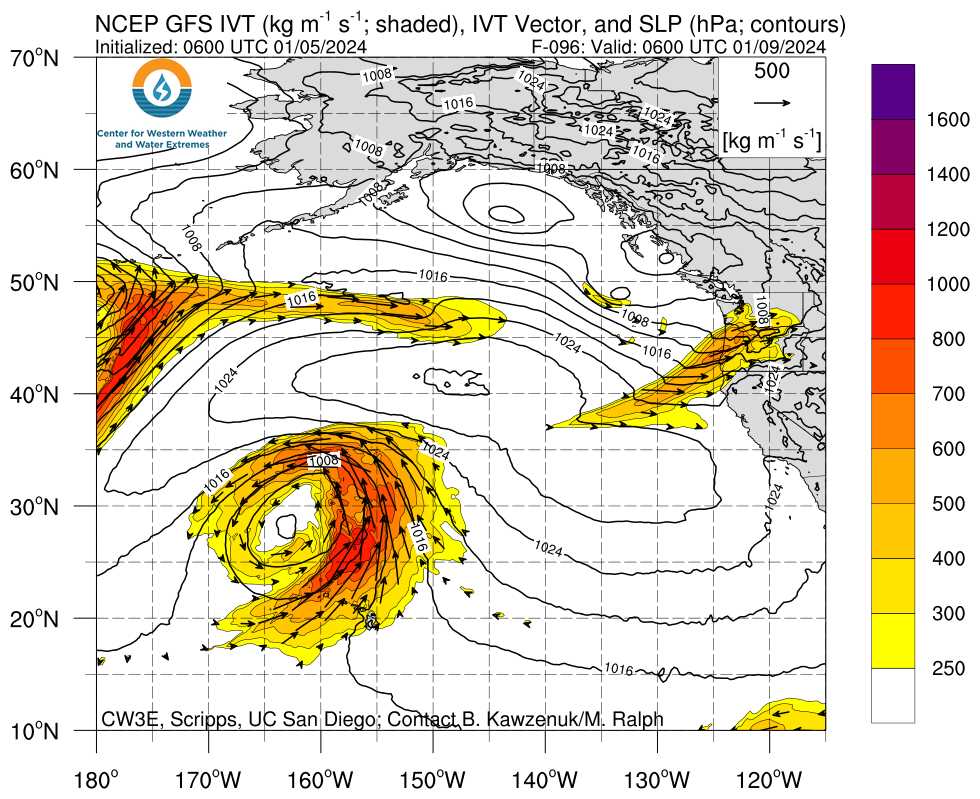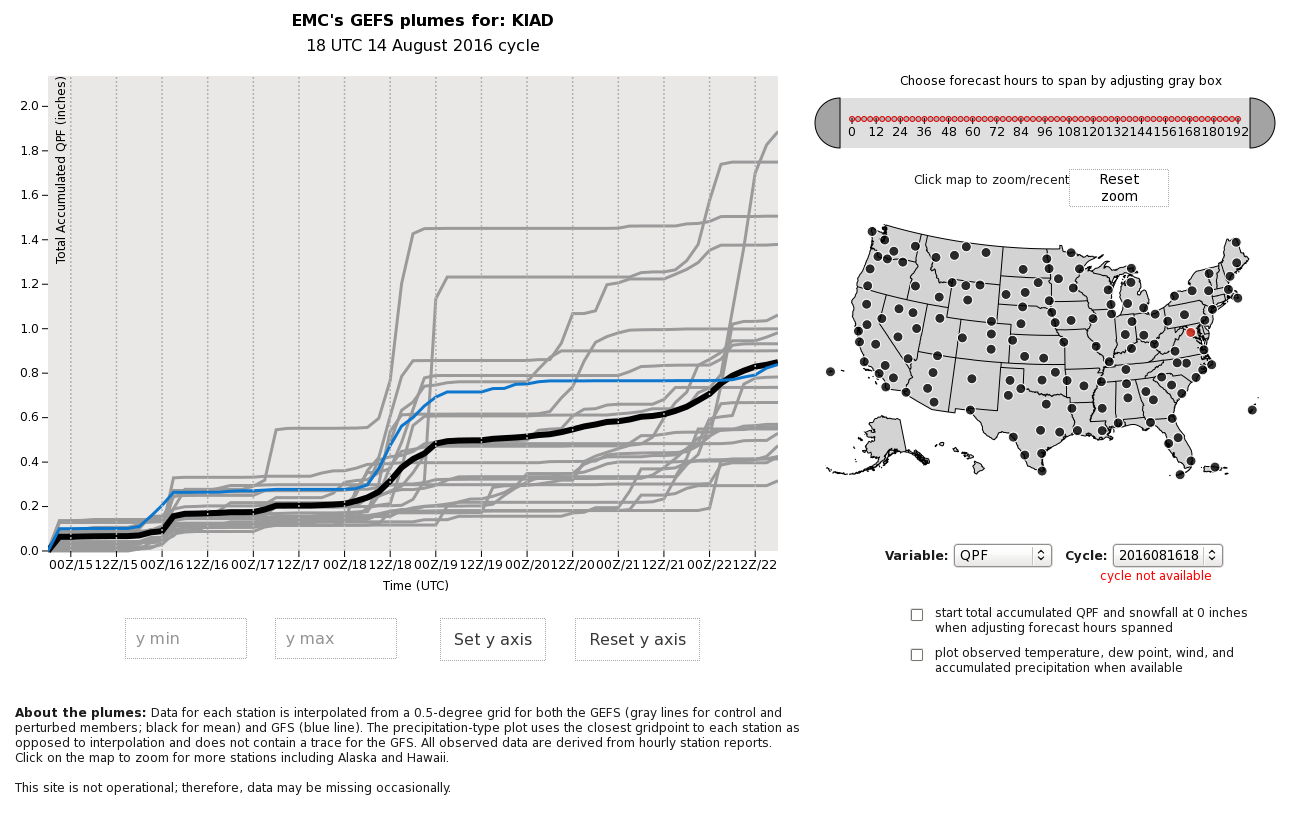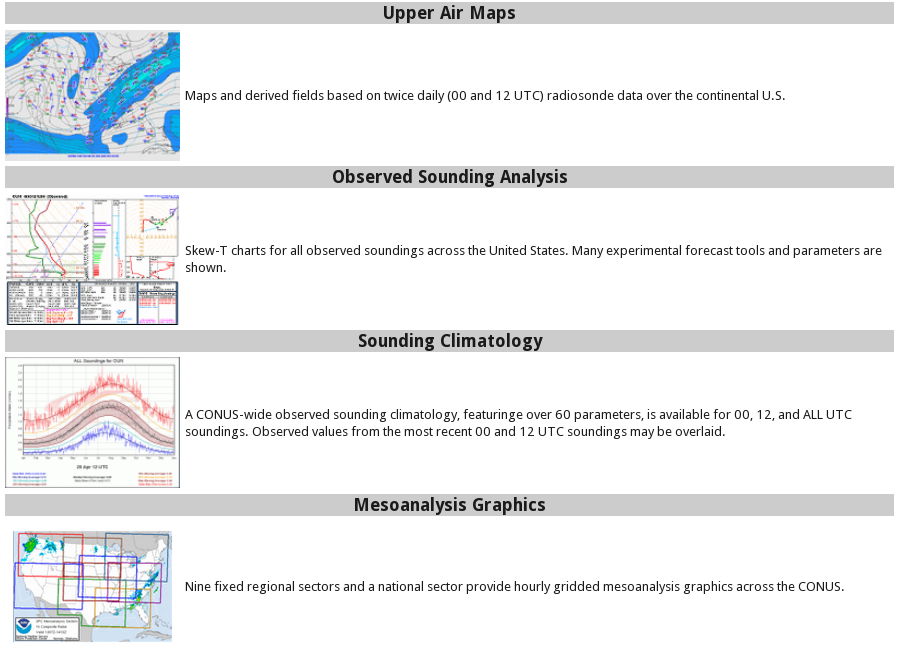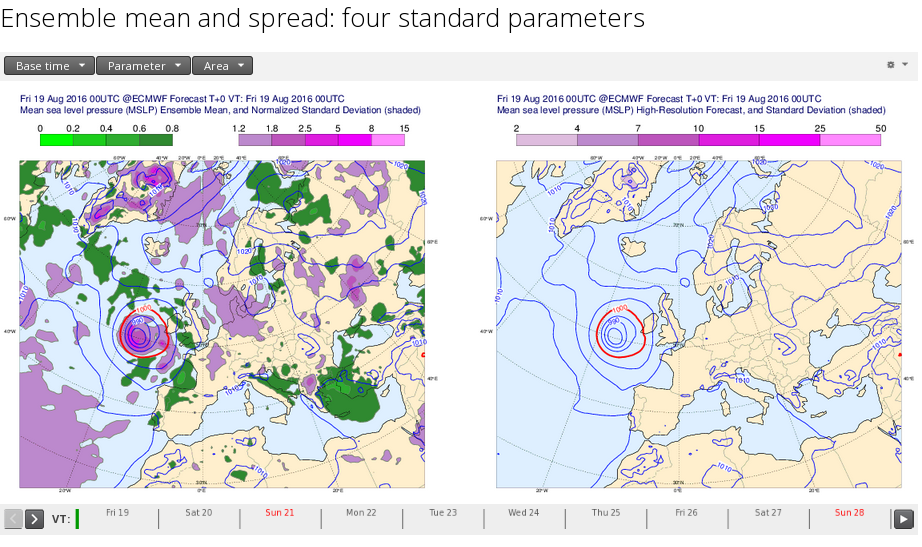Excessive Rainfall Discussion
NWS Weather Prediction Center College Park MD
1154 AM EDT Tue Jul 22 2025
Day 1
Valid 16Z Tue Jul 22 2025 - 12Z Wed Jul 23 2025
...THERE IS A SLIGHT RISK OF EXCESSIVE RAINFALL FOR PORTIONS OF
THE UPPER MISSISSIPPI VALLEY, SOUTHWEST, AND SOUTHEAST...
..Northern Plains/Upper Midwest...
16Z UPDATE: Very few changes were made to the outlook for this
update as the overall forecast reasoning below still holds. The
main change was to extend the Slight Risk area further to the west
into the central Dakotas given relatively similar signal on the 12Z
hi-res model guidance to areas further downstream. There is also a
conditional threat over portions of Iowa, the southern half of
Minnesota, and Wisconsin, where a broad Marginal Risk was
maintained (and slightly expanded). There is a fairly strong mid-
upper level wave evident in satellite imagery over southeast
Nebraska, which should continue to lift to the northeast today and
tonight. Hi-res models do attempt to fire some convection along the
southern periphery later today or this evening, but overall it
struggles. However, there is some uncertainty with the strength of
the cap, as the wave should be tracking very close to the 11-12C
isotherms at 700mb. A weaker cap than expected could lead to a more
prominent training band of convection on the southern periphery,
and could warrant a Slight Risk upgrade later today.
PREVIOUS DISCUSSION: Regional radar mosaic across the Northern
Plains depicts a migrating cluster of thunderstorms over the
Dakotas with the proxy of the convective complex along the ND/SD
border. Mean storm motions continue to point to the complex of
thunderstorms migrating east-northeast with heavy rainfall likely
to be impacting portions of eastern ND and far northeast SD into MN
by the turn of the new D1. This complex will likely draw some
attention for flash flooding by itself, but the environment will be
somewhat favorable for the first half of the D1, so the threat
will likely be more isolated with the best chance occurring in any
urbanized settings. Majority of this heavy precip will likely fall
north of I-94 in MN with the Minneapolis metro unlikely to see much
of any impacts. The period becomes more favorable for heavy rain
prospects as we move into the second half of the forecast as a
stationary front currently analyzed over IA/IL into SD will lift
northward through the afternoon with an appreciable advection of
deep layer moisture priming the environment for the following
evening. Surface low over the High Plains will slowly advance
through SD during the forecast period with a cold front dropping
steadily out of Canada with eyes on the Upper Midwest by the end of
the D1. The proxy of the warm front and advancing cold front will
lead to a tight window of enhanced sfc-850mb convergence within a
formidable pool of moist, unstable air positioned across the
eastern Dakotas through much of MN/WI. PWATs between +2 and +3
deviations will be present over the aforementioned areas with
values >2" likely as we move beyond 00z Wed. LLJ initiation across
the Upper Mississippi Valley will help trigger an area of heavy
convection across the Dakotas which will eventually migrate
eastward through the Red River basin into the northern half of MN.
As of this juncture, the greatest threat for heavy rainfall >2" is
likely over southeast ND, far northeast SD, and adjacent areas of
northwestern MN with an eastward expansion over the central portion
of MN (St. Cloud area). 00z HREF and REFS neighborhood
probabilities for >2" are between 80-90+% for these locations with
>3" (60-80%) and >5" (20-35%) well within a reasonable depiction
for a widespread flash flood threat in that area of the northern
CONUS. HREF EAS probabilities for >1" are also robust with 70-90%
for >1" and 40-60% for >2" situated over those same areas, a
testament to the growing consensus within the CAMs window as we
move closer to the event. This aligns very well with the EC AIFS
Ensemble mean QPF output of 1.25-1.5" in that corridor, a very
strong output when you take into account the traditional low bias
from the AIFS in general.
The FFG's located across central MN are small deterrent for any
appreciable risk upgrades as the threat targets places where
1/3/6hr indices remain a little high compared to areas a bit
downstream and further south. Despite those indices, multiple flash
flood warnings are increasingly likely over southeast ND, northeast
SD, and central MN as we step through the evening, especially with
a growing threat of training and back-building as proposed by the
weakening Corfidi Upshear vectors in the CAMs as we move into the
evening. This makes sense as the mean flow becomes parallel to the
boundary with the approach of the front to the north.
There is some chance this setup nudges north as the mid-level ridge
to the south will truly flex and the warm front progression should
migrate pretty rapidly to the north through the afternoon and
evening, especially with the added nose of LLJ structure positioned
to the south. Where this ends up is the ultimate delineation point
of where training could occur and have the highest prospects for
flash flooding. For now, a high end SLGT is forecast over that
corridor positioned over ND/SD/northwest MN with an eastward
extension through central MN prior to the Arrowhead. Pending
forward propagation speed of the nocturnal convection, the risk
could evolve further downstream prior to the end of the D1 period,
so it will be something we will monitor closely. In any case, the
SLGT risk still runs through portions of the Arrowhead into
northwestern WI back into those favorable areas to the west.
...Southeast...
16Z UPDATE: The main change was to expand the Slight Risk to the
northwest into southwest North Carolina, Upstate South Carolina,
and a bit more of eastern Georgia. Abundant deep moisture is
present across the region, with precipitable water values generally
above the 95th percentile, even for the heart of summer, and deep
layer mean winds at or below 10 knots. Unsurprisingly, hi-res model
guidance generates a variety of localized rainfall maxima across
the region, with basically every hi-res model generating a
localized max in excess of 4 inches somewhere in the new Slight
Risk area (and generally more than one maximum). Of course, the
placement of the maxima is more uncertain, but it does seem to be
favored in the Lowcountry of South Carolina and adjacent portions
of southeast Georgia, where simulated reflectivity from the hi-res
models tend to indicate an abundance of convection along the sea
breeze merging and colliding with developing convection further
inland, leading to complex mergers and larger clusters and/or 2-3
hour periods of training. A secondary signal, somewhat weaker
overall, but still standing out from a regional perspective, exists
in southwest North Carolina and far Upstate South Carolina.
Confidence was not high enough in placement of concentrated
convection in Florida to introduce any Slight Risk areas there, but
it would not be surprising to see some additional FFWs later today.
A Marginal Risk was also introduced over the Mid-South, from SE MO
into S IL, W KY, NW TN. Hi-res guidance is more consistently
showing a brief period of scattered, slow-moving convection in a
very unstable and moist environment this afternoon and evening.
PREVIOUS DISCUSSION: Elevated PWATs and instability across the
Southeastern CONUS will maintain a posture of widely scattered
thunderstorms capable of locally enhanced rainfall rates between
2-4"/hr that could spur flash flood prospects through the course of
the daytime hrs. A weak surface reflection along the SC coast with
a weak quasi- stationary front aligned west to east across the
Southeast will lead to enhanced regional convergence that could
allow for slow- moving heavy thunderstorms to train over any area
in proxy to these features for a few hrs. These are the types of
setups that can provide a sneaky 4-7" maxima in any given location,
especially near the low pressure center along the Carolina coastal
plain. Surface trough extending off the southern flank of the low
will bisect southeast GA down through northern FL with guidance
consistently pinning a more defined heavy precip axis within the
confines of this area. FFG's remain very high across that specific
area, so the threat for widespread flash flooding is very low,
especially when considering the probabilities for >5" are still
running <25% for a majority of that region, a signal necessary for
more appreciable impacts to occur in these zones. 00z HREF
neighborhood probs for >5" are higher than previous forecasts for
the coastal Carolina's with the max probs (30-45%) located from
Morehead City, NC down through Charleston, SC. Multiple population
centers are encompassed in that zone, the most likely locations to
see any flash flood prospects due to urbanization factors. EAS
probabilities for >1" are also pretty elevated over the Upper SC
coast (>50%) with a modest output over the area referenced above.
The synoptic and thermodynamic evolution support a strong coastal
convergence pattern, especially with the afternoon sea breeze
during the life cycle of the surface low, so the upgrade to SLGT
from the last forecast update maintains merit. Considering the
current signals, there was no reason to deviate from the previous
forecast, so the SLGT risk remains due to continuity.
...Southwest...
16Z UPDATE: The new outlook is very consistent with the previous
one, with the Slight Risk expanded slightly northward into the
mountainous region of south-central Colorado, based on improved
model QPF signal. An area of greater concern for flash flooding may
be in southeast Arizona near the Tucson metro later today, with
higher probabilities of exceeding flash flood guidance based on the
latest 12Z HREF.
Another period of monsoonal type convection will enhance localized
flash flood prospects across eastern AZ and much of NM/CO.
Persistent moisture advection along the western flank of a ridge
positioned across the Mississippi Valley will be the driver for the
threat as scattered to widespread showers and thunderstorms will
litter the Southwestern CONUS up into the Central Rockies by
this afternoon, carrying through the evening hrs. Any area within
the confines of the above regions will have a threat for impacts
due to convective cores likely producing rates >1"/hr with upwards
of 2"/hr in the strongest cells. Areal QPF average is generally
between 0.25-0.75", but neighborhood probabilities for >1" over
eastern AZ into NM/CO are well above 70% with >2" probs running
between 40-70% over the more terrain favored areas in both
locations. The most prominent signal for rainfall eclipsing 1"
aligns within the Sangre de Cristos and the eastern side of the
Mogollon Rim near the AZ/NM line. These are the most likely
locations to see heavy rainfall and heightened flash flood
prospects this period with the best chances over any remnant burn
scars. Mean storm motions will be generally weak, so any convective
cores will run the chance of impacting the same areas for multiple
hours before collapsing or moving away from their initiation
points. A broad SLGT risk encompasses much of NM, southwest TX, and
southeast AZ with a bit of an extension into CO along the Sangre de
Cristos.
Kleebauer
Day 1 threat area:
www.wpc.ncep.noaa.gov/qpf/94epoints.txt
Excessive Rainfall Discussion
NWS Weather Prediction Center College Park MD
1154 AM EDT Tue Jul 22 2025
Day 2
Valid 12Z Wed Jul 23 2025 - 12Z Thu Jul 24 2025
...THERE IS A SLIGHT RISK OF EXCESSIVE RAINFALL OVER PORTIONS OF
MINNESOTA, NORTHERN WISCONSIN, AND THE WESTERN U.P. OF MICHIGAN...
...Upper Midwest...
The progression of convection from the prior D2 will bleed over
into the front half of D3 with the cold front slowly migrating
eastward allowing some advancement of the organized convective
pattern to spill over into the Arrowhead of MN and adjacent
northern WI and western U.P. There's a better consensus on this
occurring given the aligning mass fields from relevant
deterministic, as well as an agreement on the pattern progression
as the surface low over the northern plains finally lifts northeast
along the front and clears into the northern lakes by Wednesday
afternoon. The final 12hrs of the HREF blended mean QPF output was
pretty clear in a heavy precip presentation across northern WI
through the U.P with the focus likely along and south of the
southern lake shores of Superior. Deterministic depictions are
upwards of 2-4" in additional QPF spilling over from the previous
forecast period leading to some 24hr totals from 00z Wed to 00z Thu
running upwards of 4-5" over the western U.P and northern WI. This
would entice the threat for flash flooding due to the anticipated
rates between 1-2"/hr with higher intra-hour rates expected given
the favorable environment of PWATs >2".
The cold front will still be slowly pushing eastward through the
second half of the period with guidance indicating another wave of
low pressure potentially enhancing the convective pattern across
the Upper Midwest as we move into Wednesday evening. There's a
growing consensus on heavy precip redeveloping across the central
and northern plains between NE/SD and migrating east-northeast
along and ahead of the slow-moving cold front. With flow remaining
parallel to the boundary across a majority of the cold front
positioning, heavy convection with some back-building/training
evolutions are favored which would undoubtedly lead to, at least
some scattered flash flood concerns. The highest probabilities sit
firmly over northeast NE up through the southern half of MN where
ensembles delineate the most favorable proxy of the cold front. QPF
means are running between 1-2" from Minneapolis down towards Omaha
with the prob fields off the latest ECENS and EC AIFS Ensemble
depicting the highest threat across southwest MN towards
Minneapolis with the second round of convection. This was enough to
extend the previous SLGT risk further to the southwest to cover for
the threat with even some potential for extend further back into NE
if the consensus grows and/or magnitudes of rainfall increase
further. This window (00-12z Thu) will need to be monitored
closely.
...Southeast...
A slowly westward migrating upper trough off the Southeast coast
and attendant surface low over the northern Gulf will lead to
locally heavy rainfall prospects from the central Gulf coast over
into Florida. The signal for rainfall exceeding 3" remains very
spotty within the varying deterministic, however the threat remains
for isolated heavy convection anywhere along the South Carolina
coast down through the northern half of the FL peninsula over into
the central Gulf coast. Overall, the threat remains on the lower
end of the MRGL risk category, but environment and proximity of
favorable surface pattern maintains the threat for a few robust
cells that could easily overproduce with PWAT forecasts firmly
above 2.25" with some of the coastal plain likely to see PWATs
exceeding 2.5" at times.
...Central and Southern Rockies...
Ample moisture, instability and weak mid-level perturbations in
proximity to the Continental Divide will lead to slow-moving bouts
of convection that will amplify heavy rain prospects that could
induce flash flooding. Terrain complexity and the slow-moving
nature suited by lackluster mean flow and cell anchoring over the
topography spell for a sneaky flash flood risk across the central
and southern Rockies with a general maxima positioned across CO,
west of I-25. A MRGL risk exists for the threat, but if signals
within the CAMs continue to grow as we move closer to the threat
window, a targeted upgrade is not out of the question. For now,
have maintained continuity with the MRGL and will await for the 12z
CAMs output as they will have the full D2 output/prob fields to
assess for the threat.
Kleebauer
Day 2 threat area:
www.wpc.ncep.noaa.gov/qpf/98epoints.txt
Excessive Rainfall Discussion
NWS Weather Prediction Center College Park MD
1154 AM EDT Tue Jul 22 2025
Day 3
Valid 12Z Thu Jul 24 2025 - 12Z Fri Jul 25 2025
...THERE IS A MARGINAL RISK OF EXCESSIVE RAINFALL PORTIONS OF THE
CENTRAL AND HIGH PLAINS, MIDWEST, AND SOUTHEASTERN U.S...
...Central Plains to Great Lakes...
Cold front progression and sheared mid-level shortwave ejecting out
of the Rockies will become an integral part in enhancing regional
convective output from the Central Plains up through the Great
Lakes. The environmental parameters such as favorable
thermodynamic properties (Elevated MUCAPE), weak mid-level forcing,
and sfc-850mb convergence in correlation to the front will provide
enough of a mechanism to drive scattered to widespread areas of
thunderstorm activity capable of producing localized flash
flooding. Good news is the models have the threat in question. The
bad news is the consensus on where is pretty much up in the air.
The most favorable areas in the ensemble means are across the
central Midwest back into the Central Plains with a secondary
maxima focused across the Great Lakes. The prospects for a SLGT are
relatively high within the bounds of the broad MRGL risk, but the
threat for scattered flash flood concerns is very much warranted
with the signal.
...High Plains...
Another closed low off CA will allow for a broad diffluent mid and
upper level regime with a multitude of smaller shortwaves migrating
northeast out of the Four Corners. Scattered convective pulses will
likely transpire over the Front Range down along the Continental
Divide. Any area within these bounds could be subject to heavy
precip with a potpourri of individual deterministic outputs
signaling the threat for 2-3+" in any location. Not enough of an
organized area to produce anything more than a broad MRGL risk
encompassing the above areas, so maintained continuity from
previous forecast.
...Southeast...
Low pressure along the central Gulf coast will entice yet another
period of heavy convective potential from LA back into FL/GA. PWATs
remains very high (>2.25") for the period with ample instability
situated along the Gulf coast and areas just inland. This is a
prime setup for somewhere to see over 5" of rainfall in a spot, but
the question of exactly where is very much up in the air. Just
assessing the SLP positioning, the best threat is likely over
Southern LA, mainly along and south of I-10. This is a signal
within multiple global outputs, and coincides with the best
convergent winds on the northern side of any surface circulation.
In any case, still kept the previous MRGL inherited just due to the
lack of a discernible organized maxima, but don't be surprised to
see a targeted upgrade somewhere along the central Gulf coast as we
inch closer to the time frame of interest.
Kleebauer
Day 3 threat area:
www.wpc.ncep.noaa.gov/qpf/99epoints.txt
